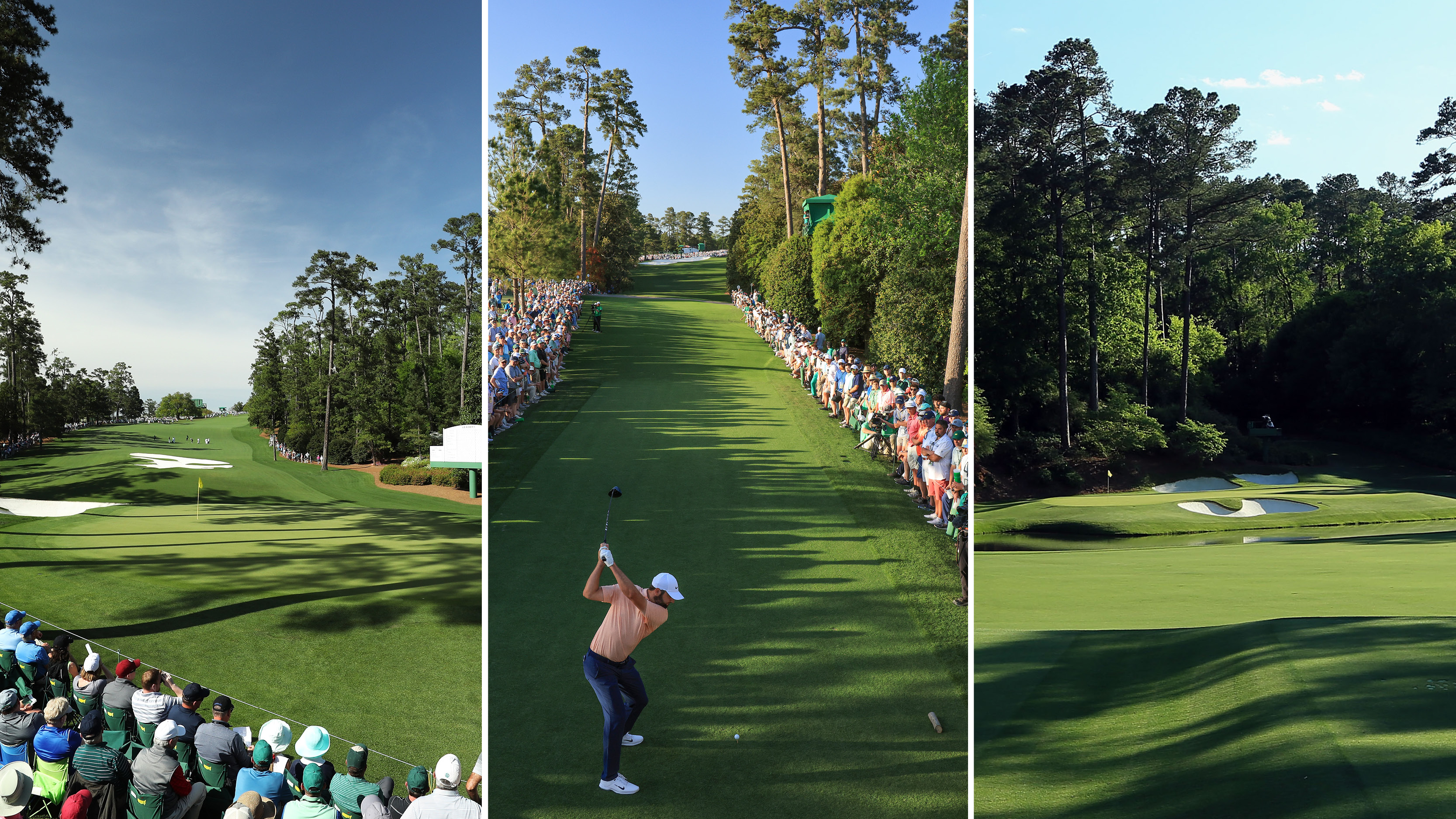
All the Augusta National hole names pay homage to its former life as a plant nursery.
They also reflect the importance the club, which hosts and runs The Masters, places on the presentation of its course. It is estimated that more than 80,000 plants of over 350 varieties were added to the layout.
It was Bobby Jones, Clifford Roberts and Louis Alphonse Berckmans who named each hole. Berckmans was made a member of the club and returned to Augusta National at the age of 74 to rehabilitate the threes and shrubs around the course.
It was he that decided where to plant each of the 18 varieties that are now the names of the holes.
The golf course itself is a living, breathing thing and it has evolved, and been changed, since it opened in 1932 as the work of the great golf architect Alister Mackenzie.
Not only have most of the hole designs been tweaked, or sometimes radically changed – indeed one is a completely new hole – but many of the hole names have also changed.
Augusta National Hole Names
- Hole 1: Tea Olive - Par 4, 445 yards
- Hole 2: Pink Dogwood - Par 5, 585 yards
- Hole 3: Flowering Peach - Par 4, 350 yards
- Hole 4: Flowering Crab Apple - Par 3, 240 yards
- Hole 5: Magnolia - Par 4, 495 yards
- Hole 6: Juniper - Par 3, 180 yards
- Hole 7: Pampas - Par 4, 450 yards
- Hole 8: Yellow Jasmine - Par 5, 570 yards
- Hole 9: Carolina Cherry - Par 4, 460 yards
- Hole 10: Camellia - Par 4, 495 yards
- Hole 11: White Dogwood - Par 4, 520 yards
- Hole 12: Golden Bell - Par 3, 155 yards
- Hole 13: Azalea - Par 5, 545 yards
- Hole 14: Chinese Fir - Par 4, 440 yards
- Hole 15: Firethorn - Par 5, 550 yards
- Hole 16: Redbud - Par 3, 170 yards
- Hole 17: Nandia - Par 4, 440 yards
- Hole 18: Holly - Par 4, 465 yards
Augusta National Masters Course Guide
Hole 1 - Tea Olive: Par 4, 445 yards
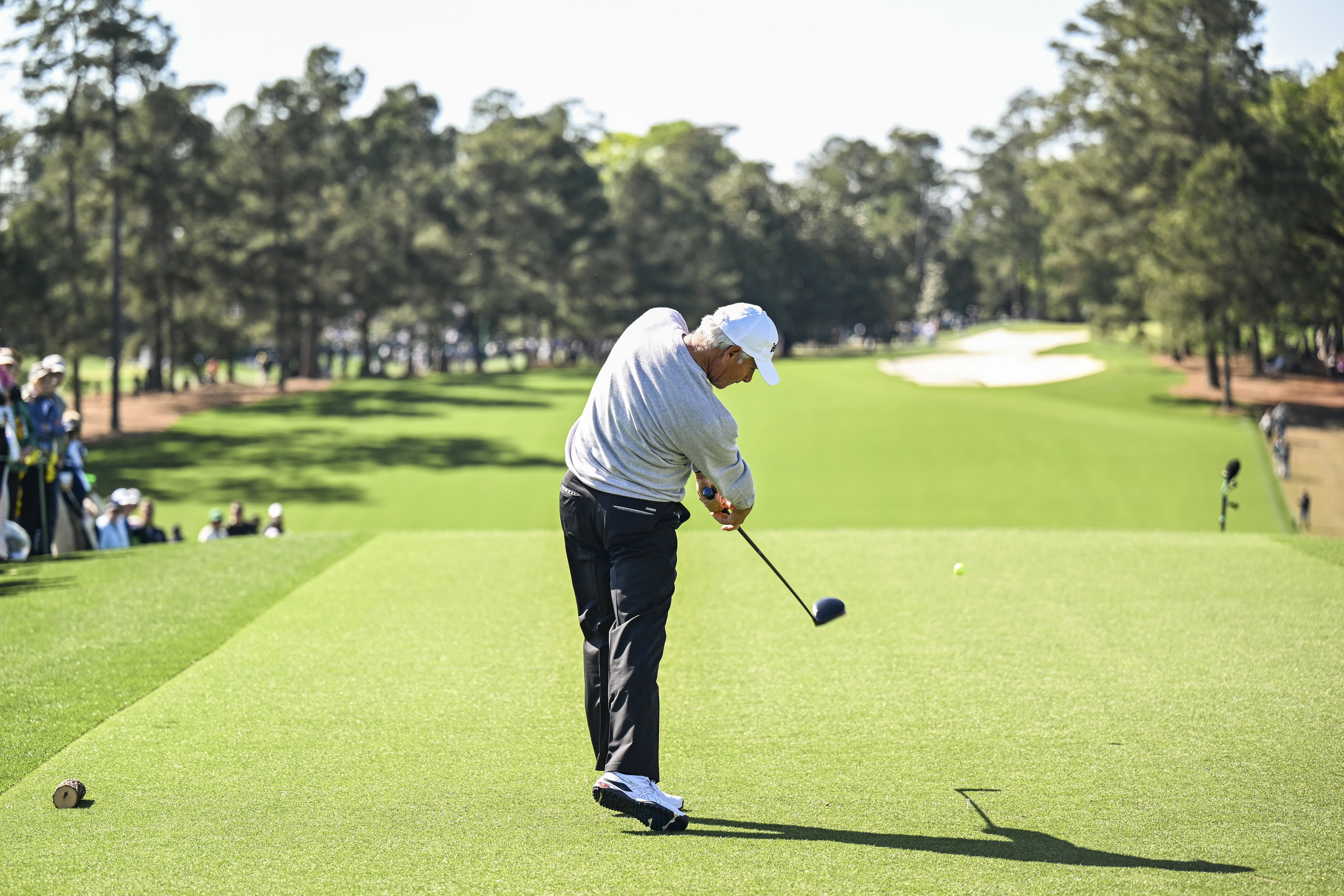

- Lowest score: 2 (five times)
- Highest score: 9 (Ernie Els, 2016)
When the course opened in 1934 the nines were the reverse of what they are today, so this was the 10th hole. It was called Cherokee Rose, which is Georgia's state flower, and measured about 400 yards.
It has now been lengthened to 445 yards. It used to have a stream running across it, easily cleared from the tee. The fairway bunker on the right was moved nearer the green in 2001. The one further up on the left was removed and a greenside bunker installed instead in 1950. Tea Olive, which is Native to eastern Asia, is on the right of the fairway and at the rear of the green.
Hole 2 - Pink Dogwood: Par 5, 585 yards
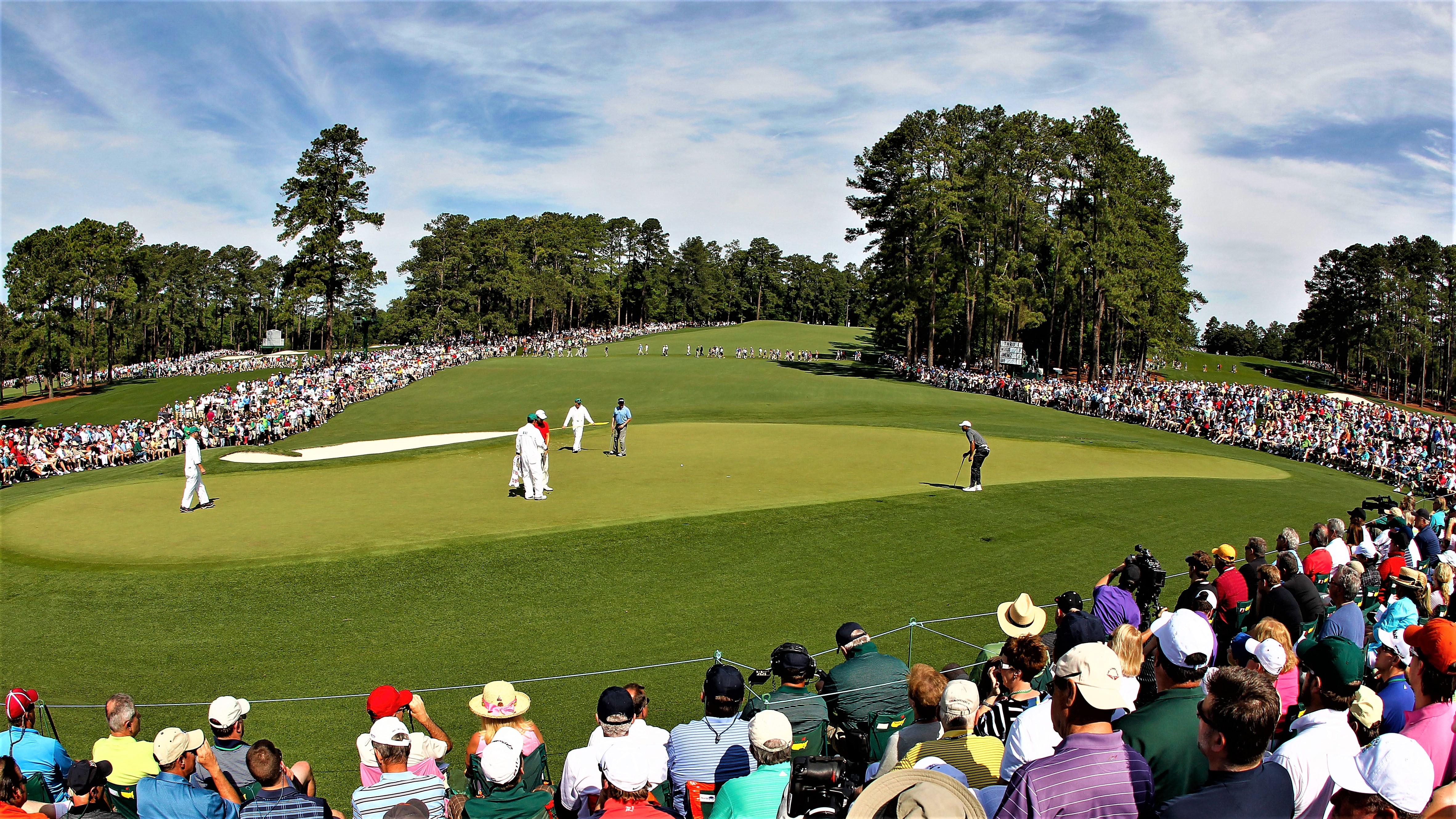
- Lowest score: 2 (Louis Oosthuizen, 2012)
- Highest score: 10 (Twice)
These red-berried trees which have pink blossoms from March to May, are on both sides of the fairway. Before it was called Pink Dogwood, the hole was named Woodbine.
The changes that have been made over the years to this par 5 including narrowing the fairway and moving the fairway bunker from the left to the right and further from the tee. The hole was lengthened in 1999 by 20-25 yards, and the Masters tee was moved a further 10 yards back ahead of the 2024 tournament.
Hole 3 - Flowering Peach: Par 4, 350 yards
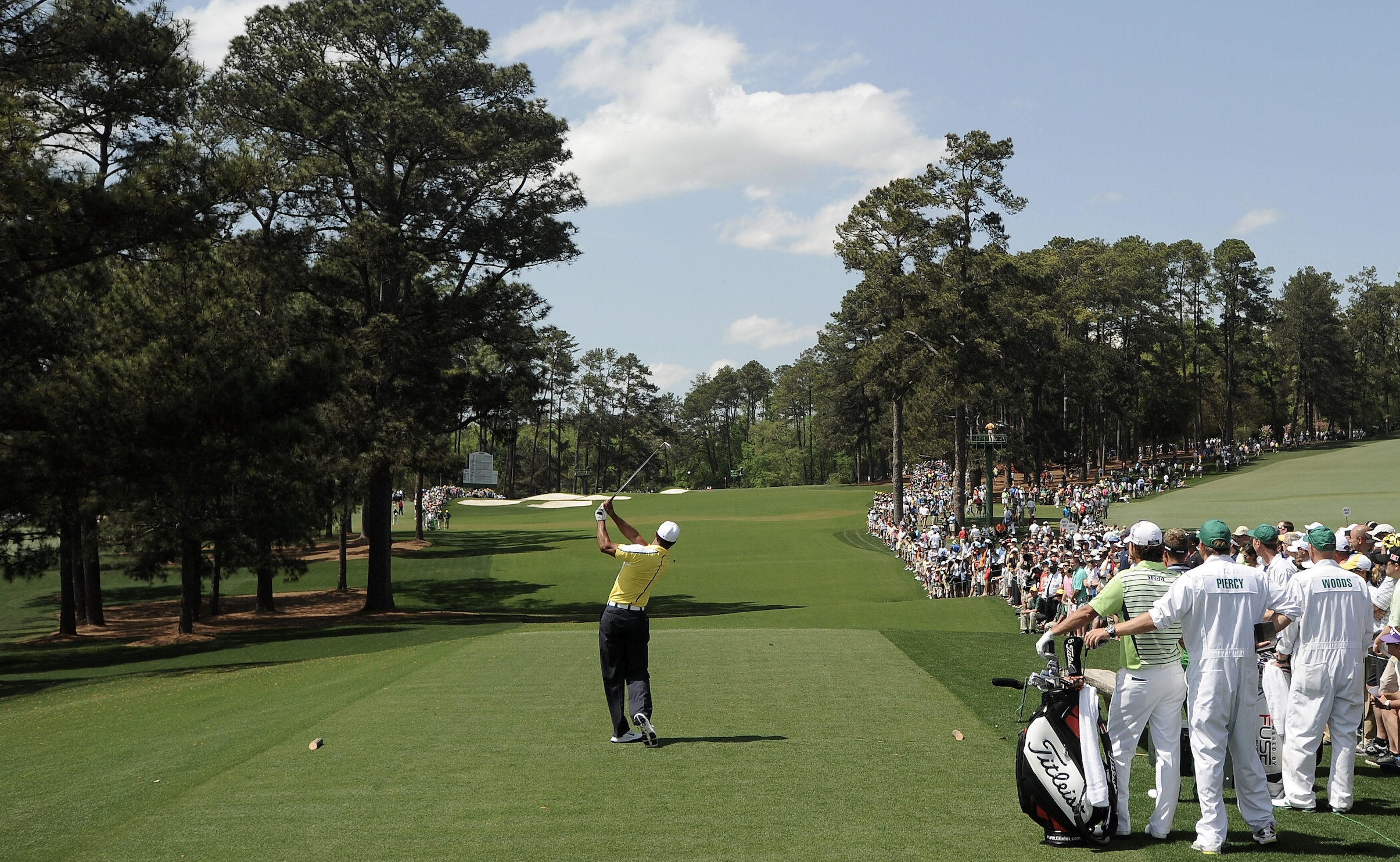
- Lowest score: 2 (19 times)
- Highest score: 8 (Douglas B. Clarke, 1980)
The golf course has been changed many times, by many hands, since Alister Mackenzie’s original design. But this hole design is still much as Mackenzie had envisaged and it has remained at its original length of 350 yards, which is the shortest par 4 on the course and the only par 4 under 400 yards.
Flowering Peach, a native of China, is on the right side of the fairway. It blooms and double blooms in March and early April.
Hole 4 - Flowering Crab Apple: Par 3, 240 yards
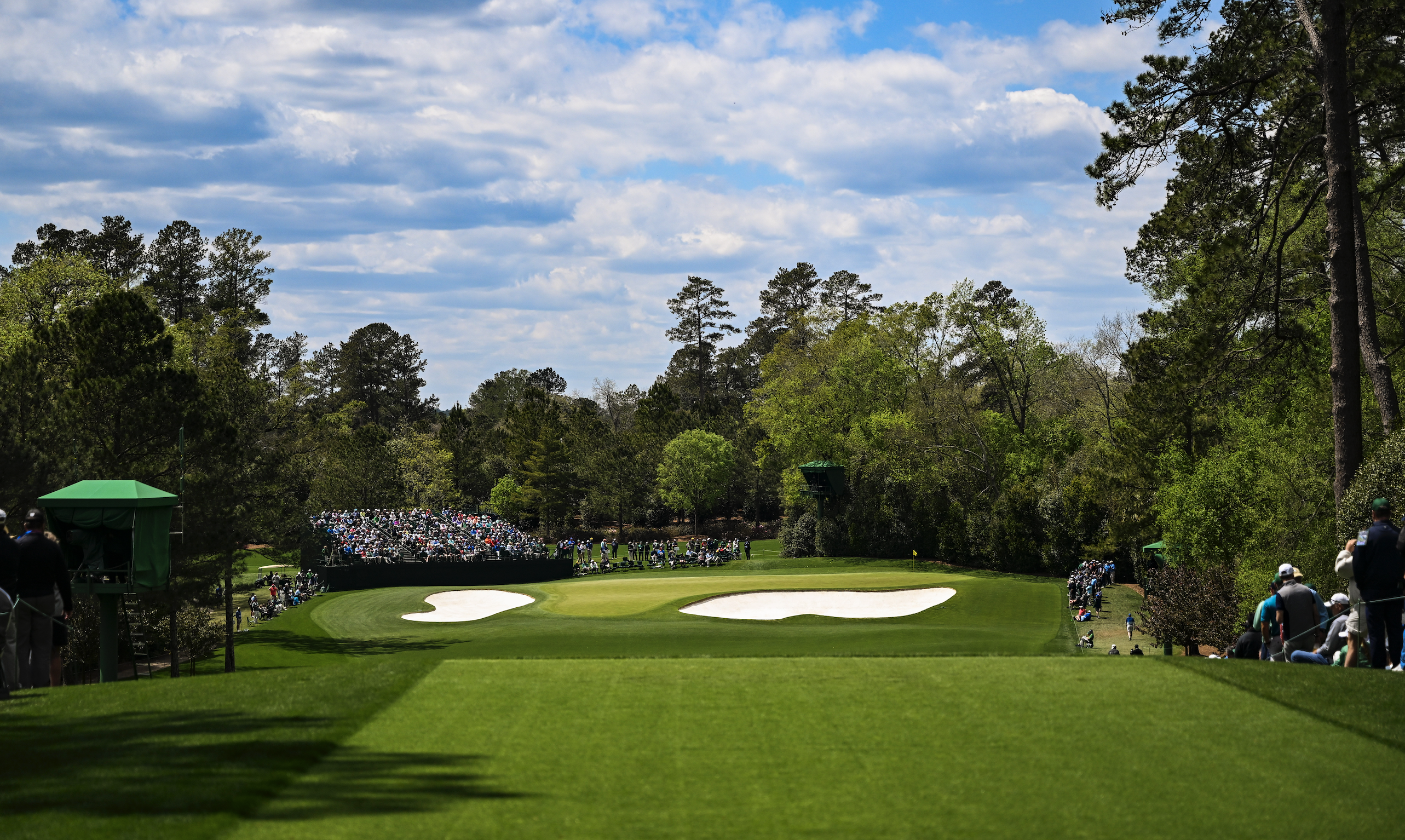
- Lowest score: 1 (Jeff Sluman, 1992)
- Highest score: 8 (Henrik Stenson, 2011)
The 4th hole used to be called Palm, but now takes its name from the Flowering Crab Apple on the right side leading up to the green, which blooms from late March to early April.
This long par 3 measures 240 yards having started its life at 190 yards. It does play downhill, though.
Hole 5 - Magnolia: Par 4, 495 yards

- Lowest score: 2 (9 times)
- Highest score: 8 (4 times)
As an uphill par 4 of 495 yards – in 1934 it was 440 yards – it is no surprise that that this hole currently plays as one of the hardest holes at the Masters after changes in 2019 that saw the tee box pushed back 40 yards.
The two bunkers down the left have also been moved over time and are now a 313 yard carry for the pros, who aim their tee shots to the right side of the fairway.
This hole shares its name with the lane that leads to the clubhouse at Augusta National.
Hole 6 - Juniper: Par 3, 180 yards
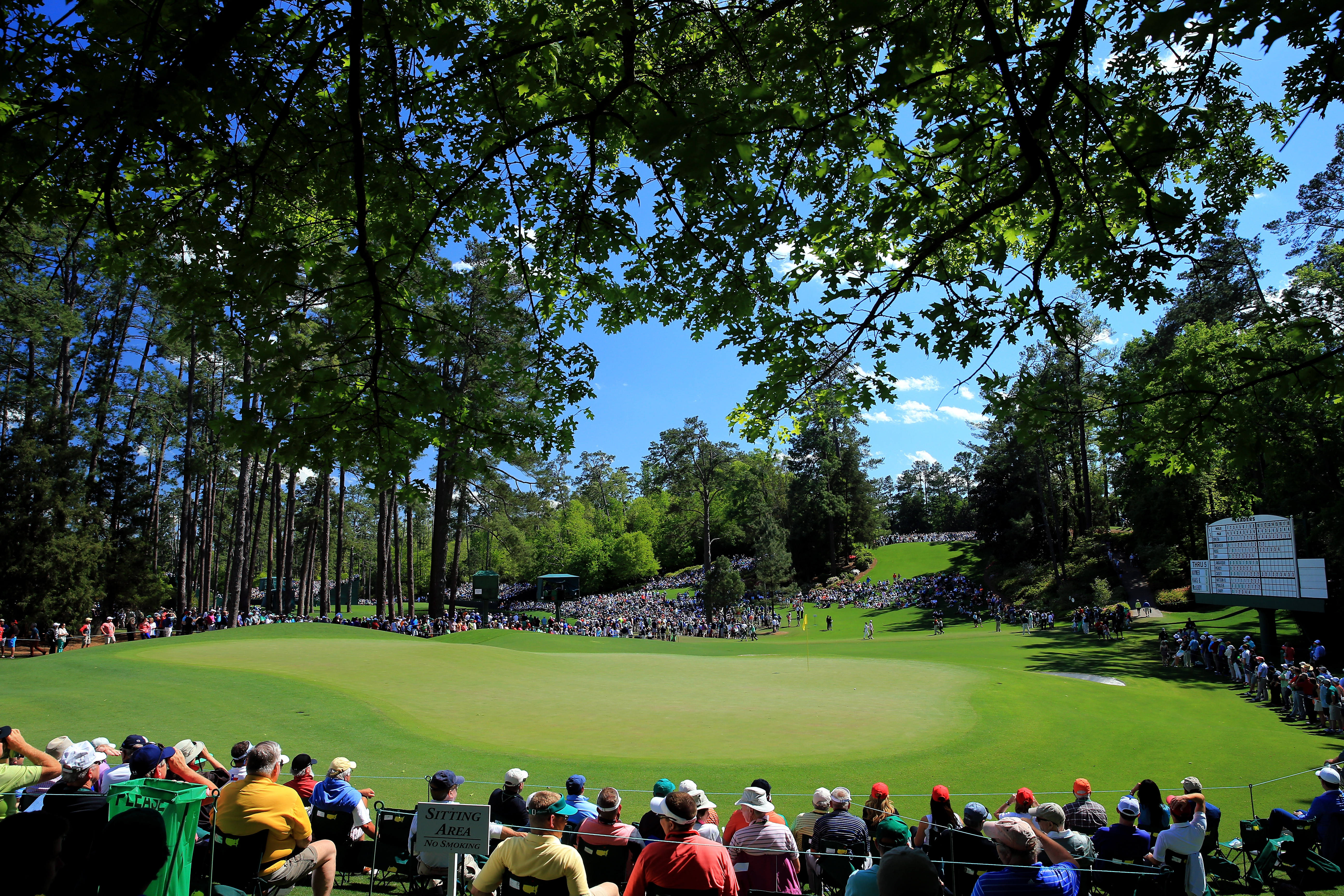
- Lowest score: 1 (6 times)
- Highest score: 7 (3 times)
The major change on this downhill par 3 was the stream being turned into a pond and then both of these being filled in. This hole is also unusual in that it has been shortened – to 180 yards from its 185 yards when the course opened. Just like the 4th, this par 3 plays downhill.
The hole was designed with a Redan Green. Juniper, which can grow up to 40-50 feet tall, is around the tee, and around the right side of the green.
Hole 7 - Pampas: Par 4, 450 yards
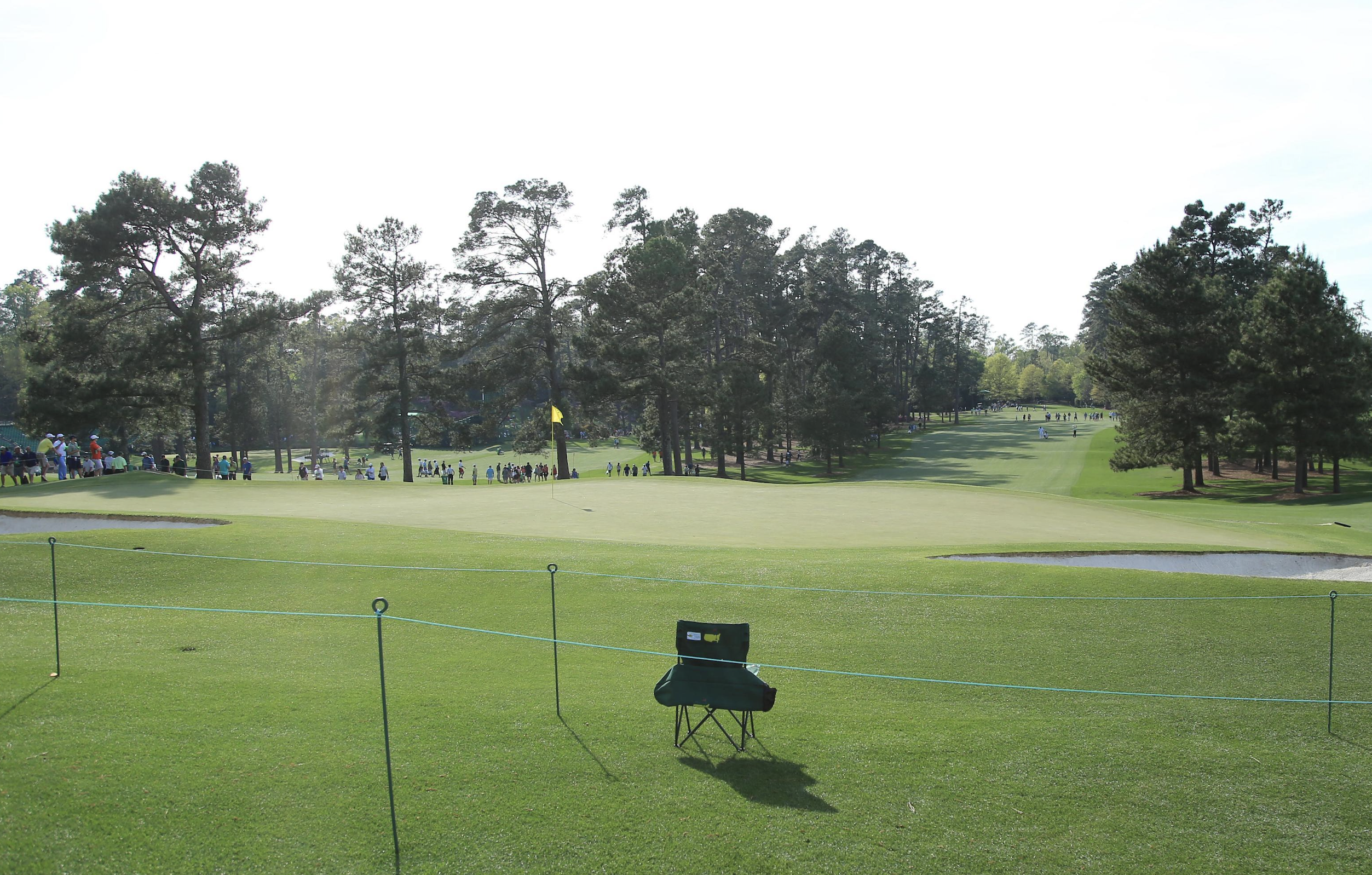
- Lowest score: 2 (17 times)
- Highest score: 8 (Twice)
This hole, originally called Cedar, has been much changed. Mackenzie’s inspiration had been the bunkerless 361-yard 18th on the Old Course at St Andrews and its Valley of Sin.
Mackenzie’s hole was 370 yards and equally bunkerless. In the 1937 Masters Byron Nelson drove the green – and in 1938, at the suggestion of Horton Smith, twice a winner of the Masters, the green was relocated. This new green was beyond the old one, atop a hill and modelled on the 8th at Pine Valley and fronted by three bunkers.
In 1956 two rear greenside bunkers were added. In the mid-1990s the green was enlarged and trees planted to narrow the fairway. In 2002, a new back tee added 40-45 yards to the hole, and in 2011 it was pushed back a further 40 yards. Pampas now measures 450 yards.
Hole 8 - Yellow Jasmine: Par 5, 570 yards
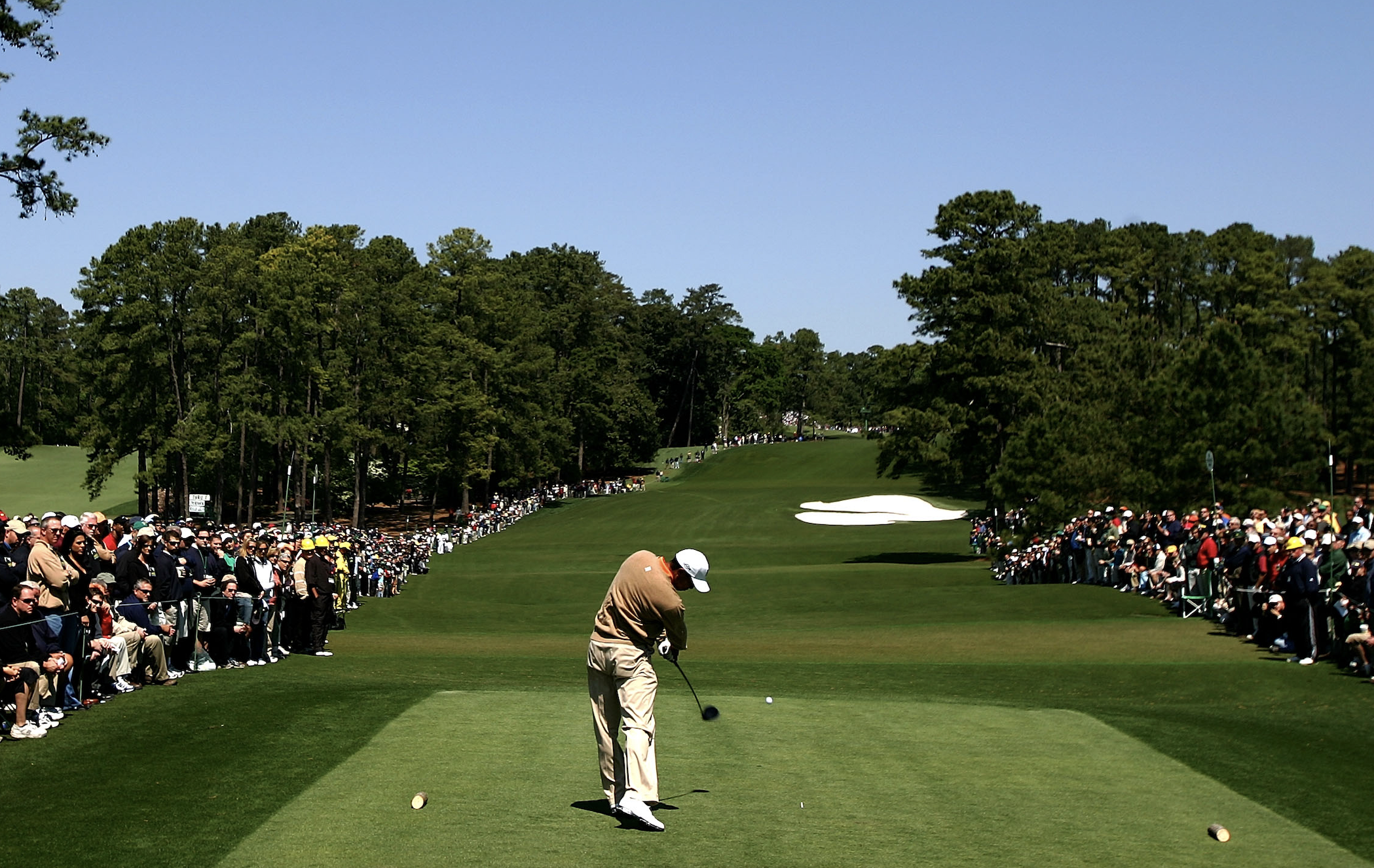
- Lowest score: 2 (Bruce Devlin, 1967)
- Highest score: 12 (Frank Walsh, 1935)
This has been subject to one of the most controversial changes to Mackenzie’s vision. The hole originally had a punchbowl green surrounded by hillocks, which made the putting surface blind for those attempting to get on this uphill par 5 in two, but visible to those taking a conventional three-shot approach.
Augusta National Chairman Clifford Roberts thought the hillocks limited spectator sightlines so had them removed. The green was reshaped as a platform in a figure of 8, to some fury – and as a result a sign at the 1957 Masters explained this change would only be temporary. That summer George Cobb rebuilt the green more in keeping with Mackenzie's intention, although it was wider and flatter than Mackenzie’s and, instead of the hillocks, bunkers were added. After Roberts’ death, Byron Nelson was brought in to re-establish the punch-bowl green.
Hole 9 - Carolina Cherry: Par 4, 460 yards
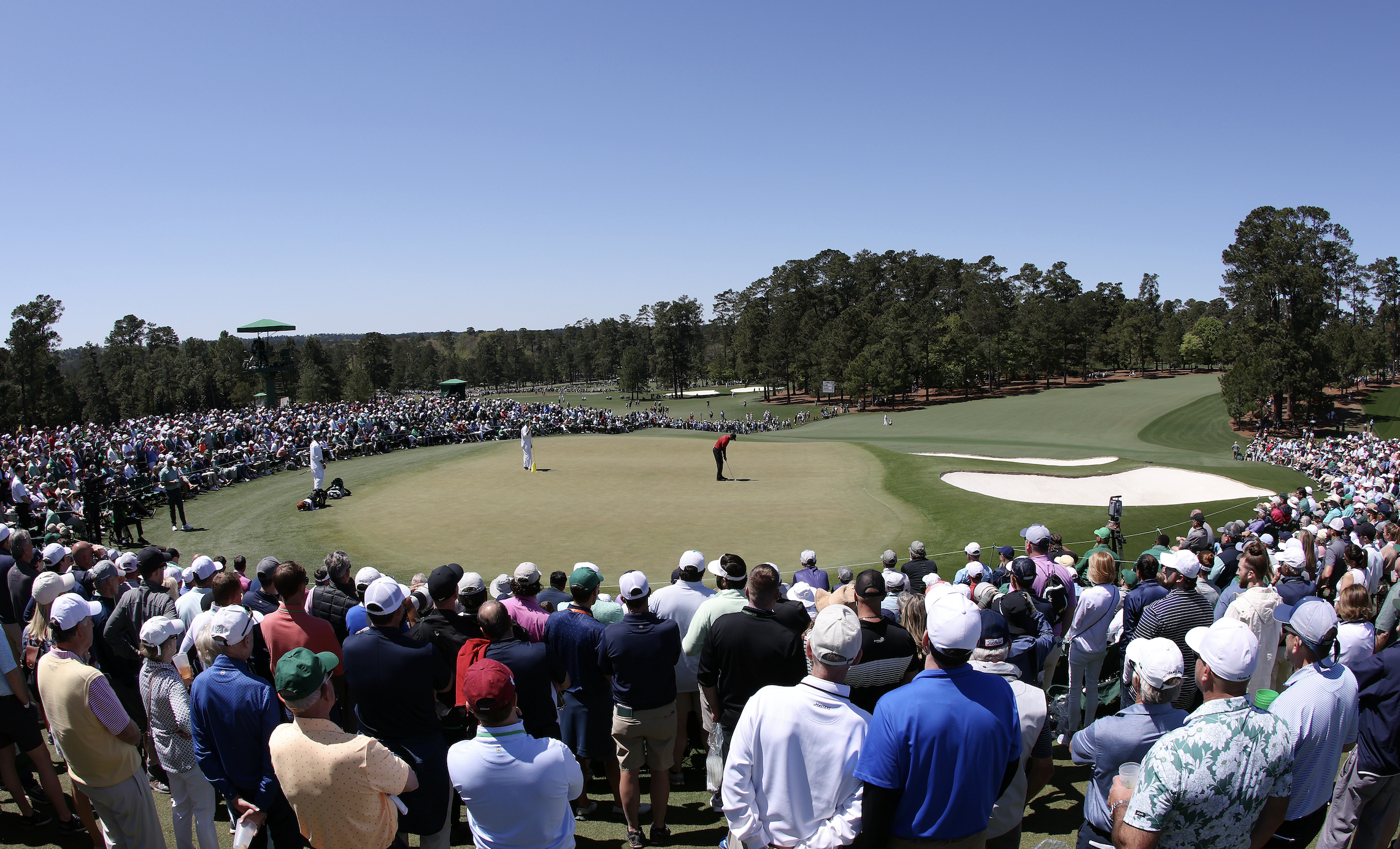
- Lowest score: 2 (6 times)
- Highest score: 8 (4 times)
The Carolina Cherry, on the right side of the fairway, produces small creamy white flowers in two-inch clusters from February to April.
The original green was horseshoe-shaped around a bunker. Players found it easier to approach the green on this right-to-left dogleg from the 1st fairway, so the green was rebuilt and five bunkers placed left of the green in 1938. In the 1950s, trees were planted to further discourage players hitting to the 1st fairway.
Parts of the green have been rebuilt at various times to provide more pin positions on the steepest green on the course. The hole has also been variously lengthened so approach shots are played from a hanging lie not the bottom of a valley.
Hole 10 - Camellia: Par 4, 495 yards
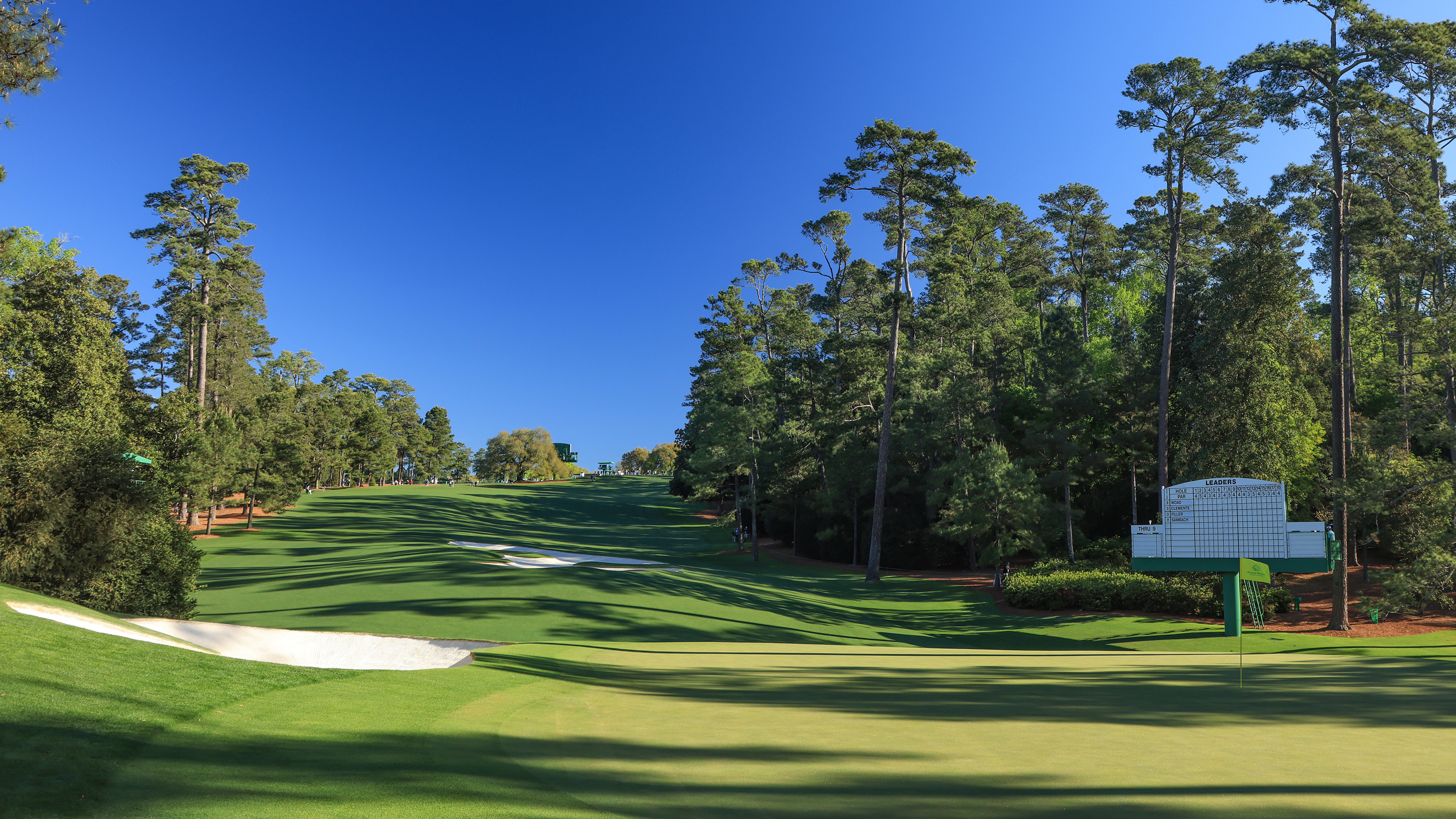
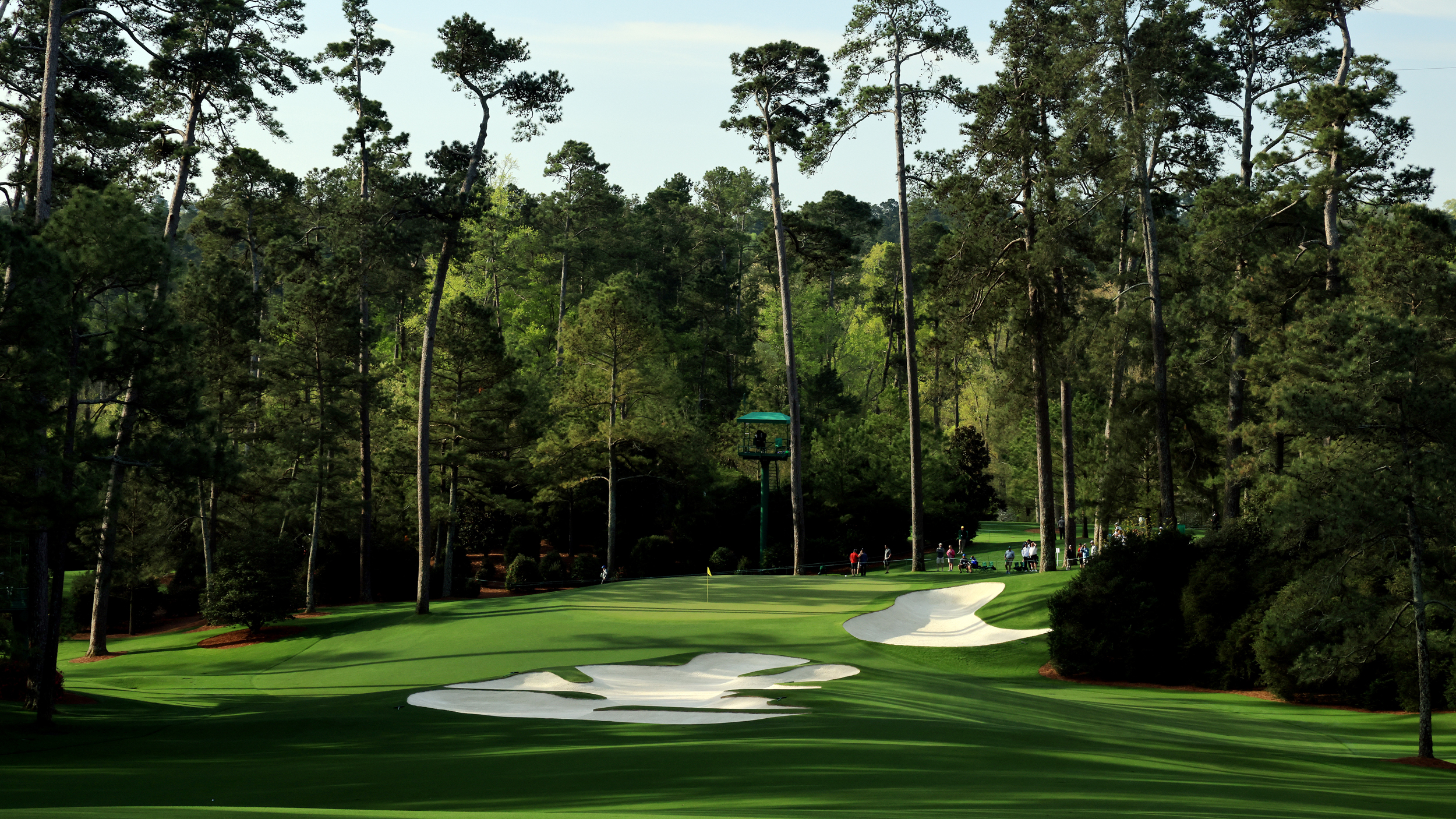
- Lowest score: 2 (10 times)
- Highest score: 9 (Danny Lee, 2009)
Designed by Mackenzie as a ‘comparatively easy’ opening downhill par 4, it has mutated to be the 10th and, historically, one of the toughest holes relative to par at The Masters.
But neither tee nor green are where Mackenzie had sited them. The original green location was to the right of where the fairway bunker is. But it had to be moved up the hill due to drainage issues – en route to winning The Masters of 1936 Horton Smith opted to chip from the green so as to avoid a pool of casual water. With changes to tee placements also, Camellia now plays to 495 yards not Mackenzie’s 430. The Camellia themselves are at the rear of the green and to the left of the fairway.
Hole 11 - White Dogwood: Par 4, 520 yards
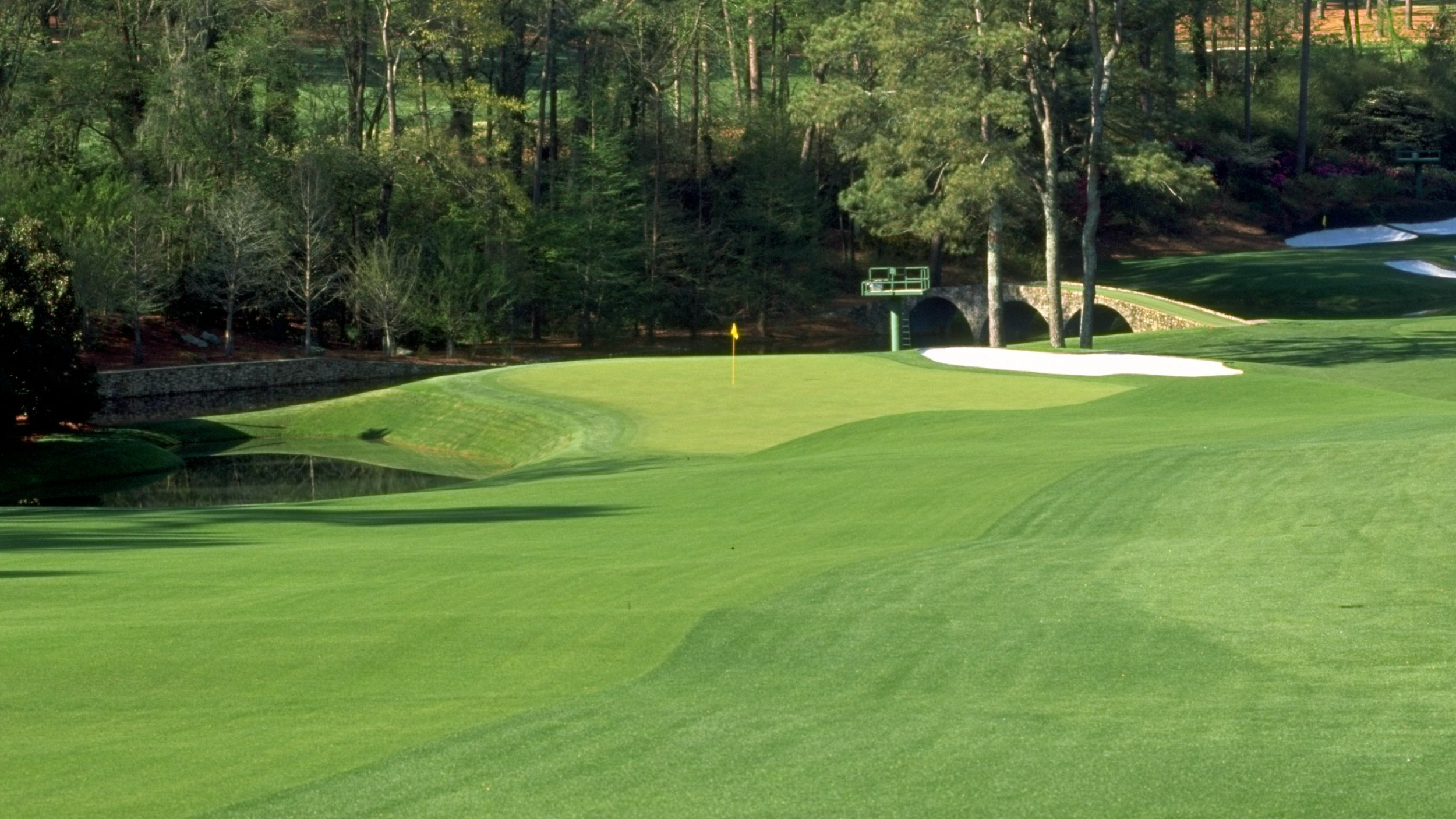
- Lowest score: 2 (6 times)
- Highest score: 9 (5 times)
The start of Amen Corner is another hole which has been changed dramatically. It used be a shorter, more severe dogleg, but it has been lengthened and straightened in a series of changes.
The pond to the left of the green was a stream, but it was dammed before the 1951 Masters. The name of the hole also has been lengthened – it used to be called simply Dogwood. Ahead of the 2022 Masters, the 11th tee was moved back 15 yards and to the left, and some trees down the right side of the fairway were removed. It now measures 520 yards.
Hole 12 - Golden Bell: Par 3, 155 yards
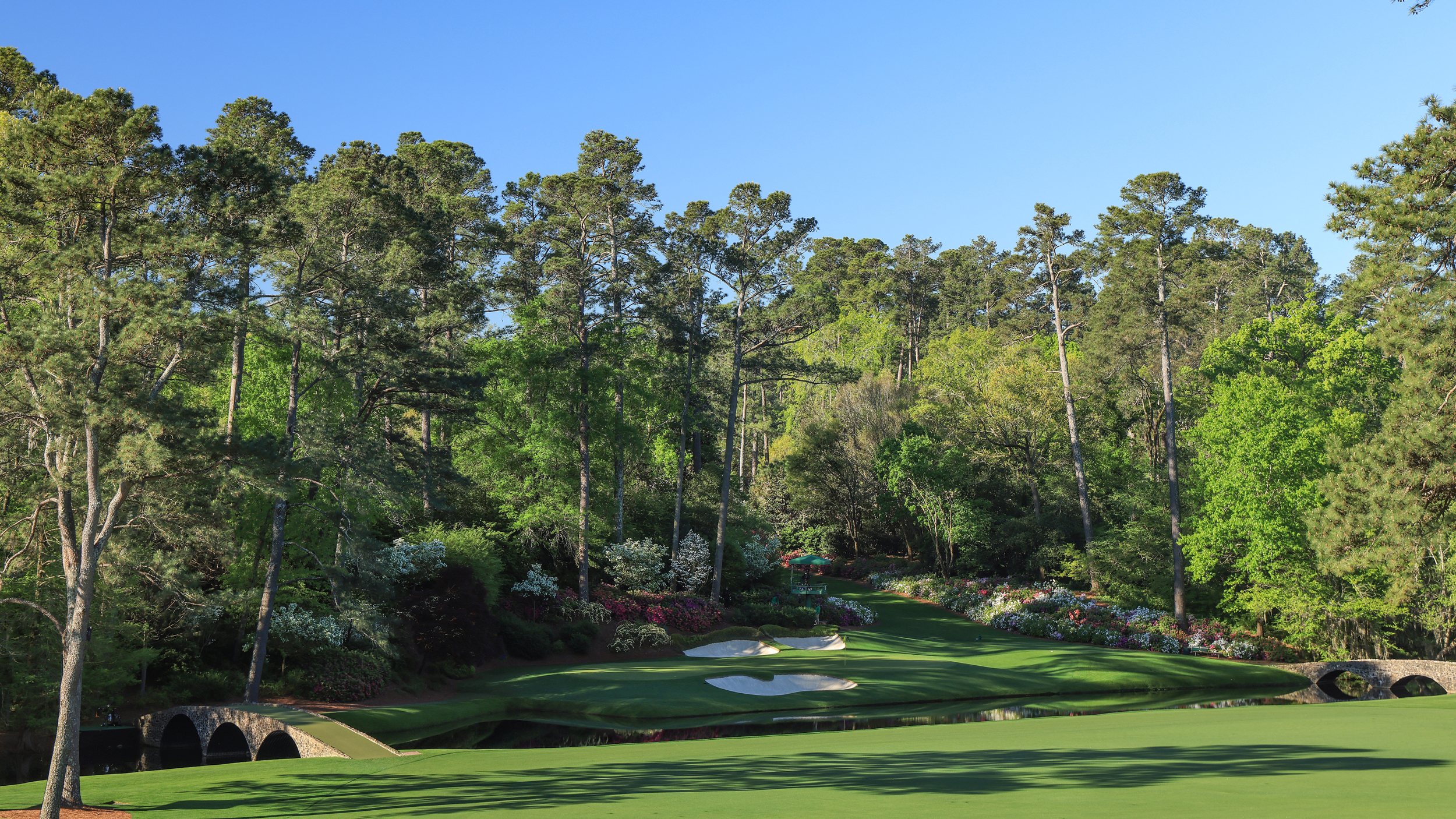
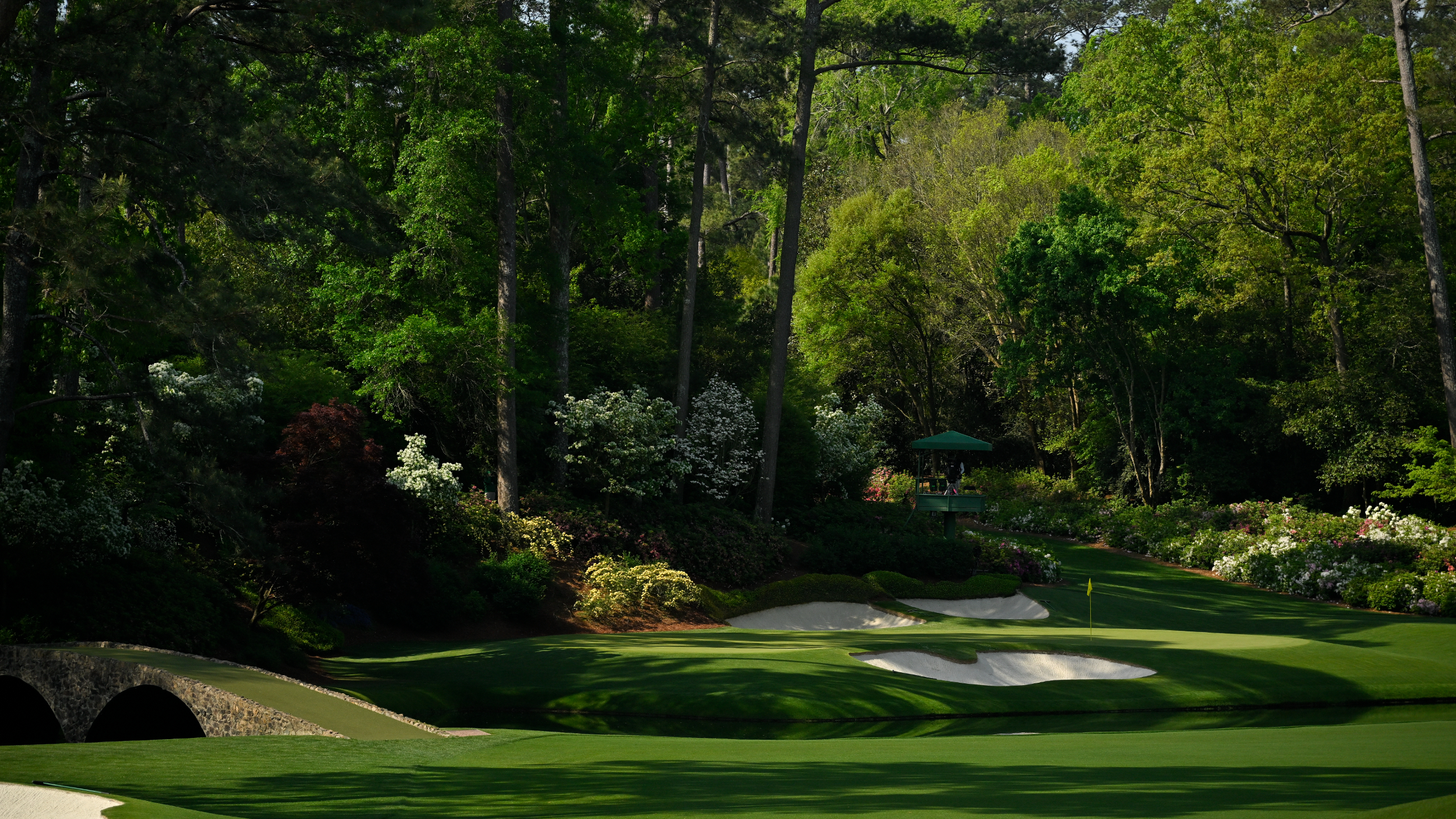
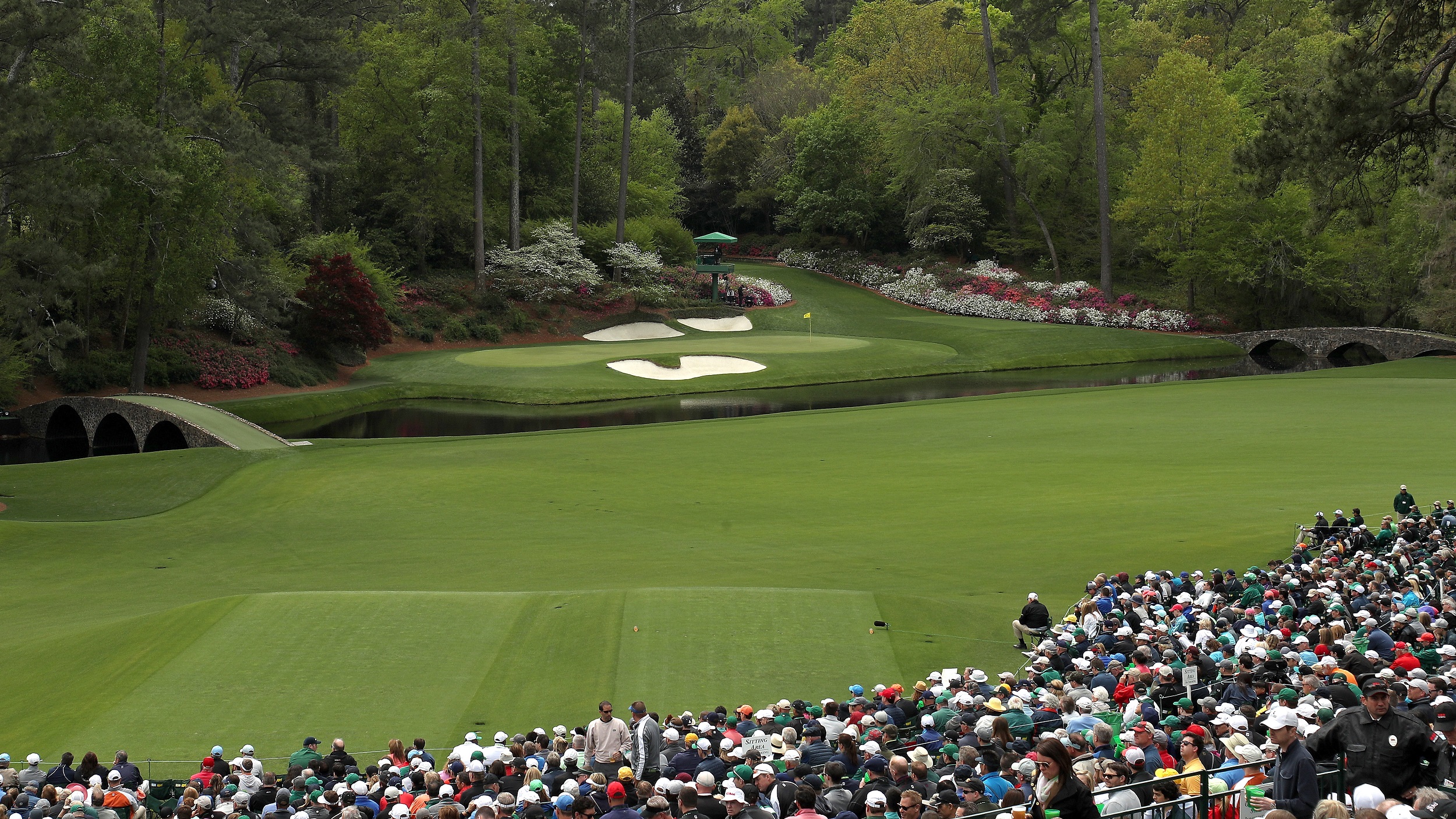
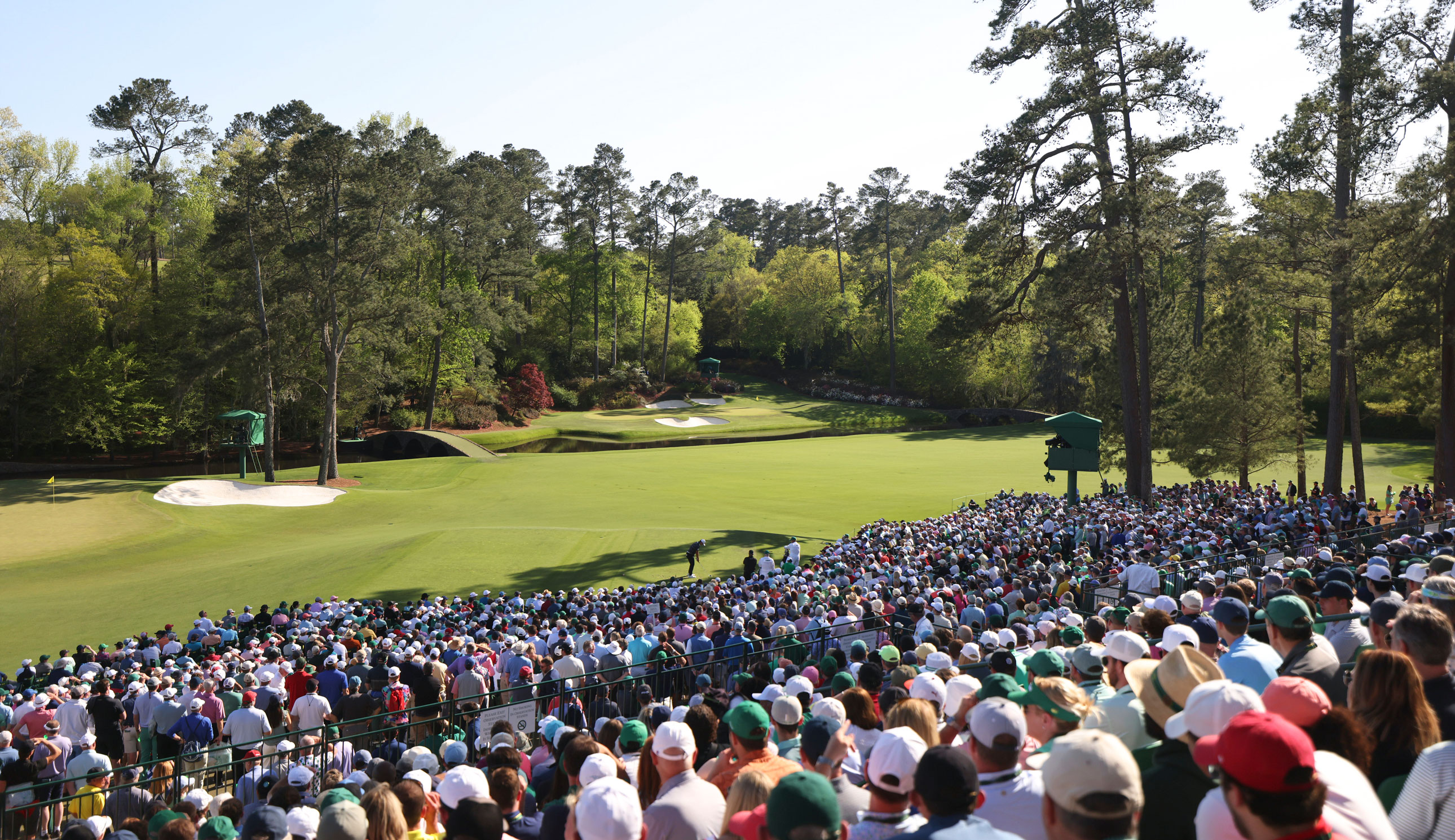
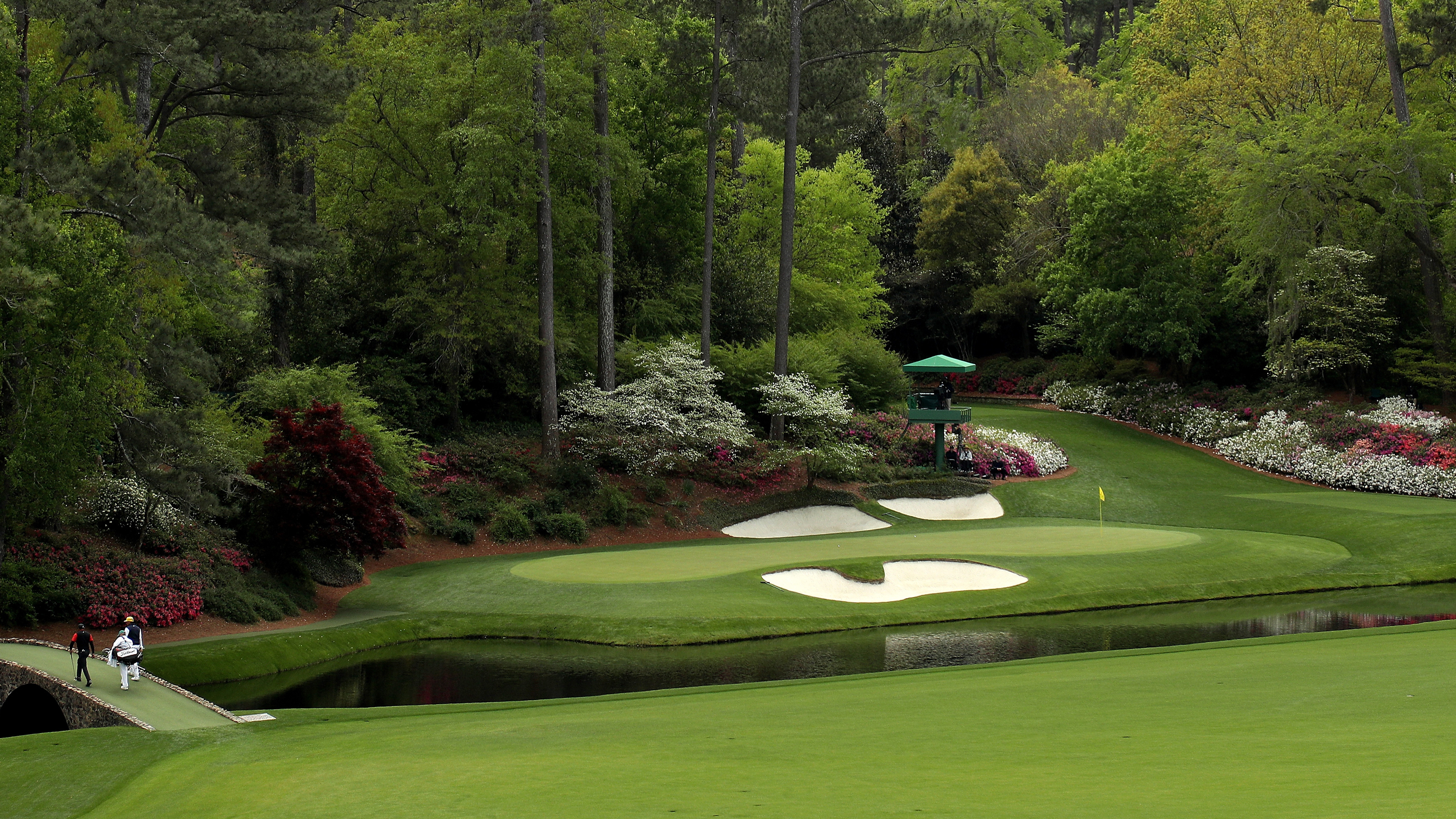
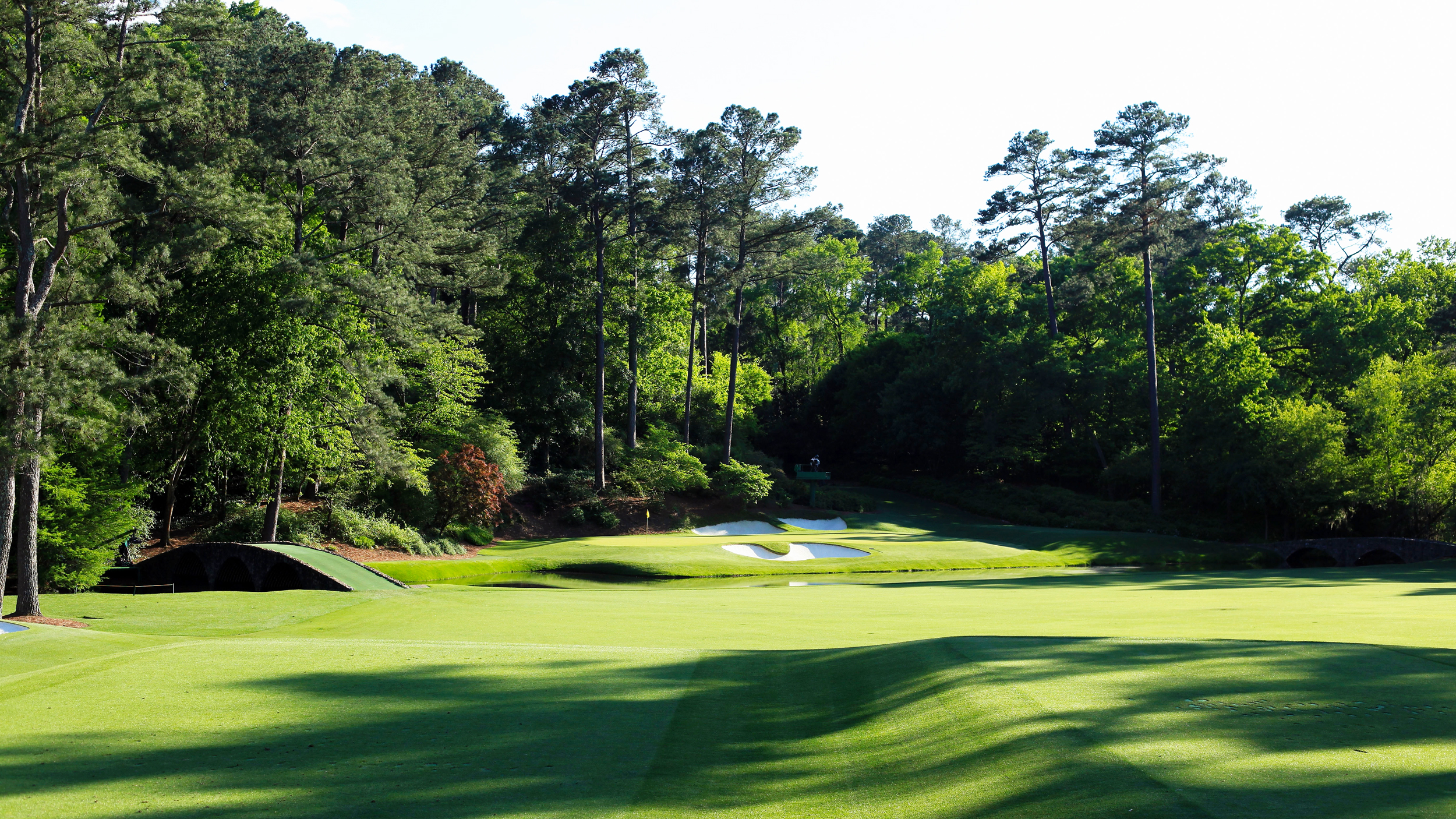
- Lowest score: 1 (three times)
- Highest score: 13 (Tom Weiskopf, 1980)
This is one of the most famous golf holes in the world, but did you know that it used to be called Three Pines, after the trio of pine trees by the tee?
They all died, and now the hole is named Golden Bell, after the deciduous flowering shrub behind the green.
This hole remains much as it ever was, however the bunkering has changed behind the green and the shape and size of the putting surface has been tinkered with and the creek has been widened. It's much tougher than it looks, as wind plays a big factor when the ball gets above the trees.
Hole 13 - Azalea: Par 5, 545 yards
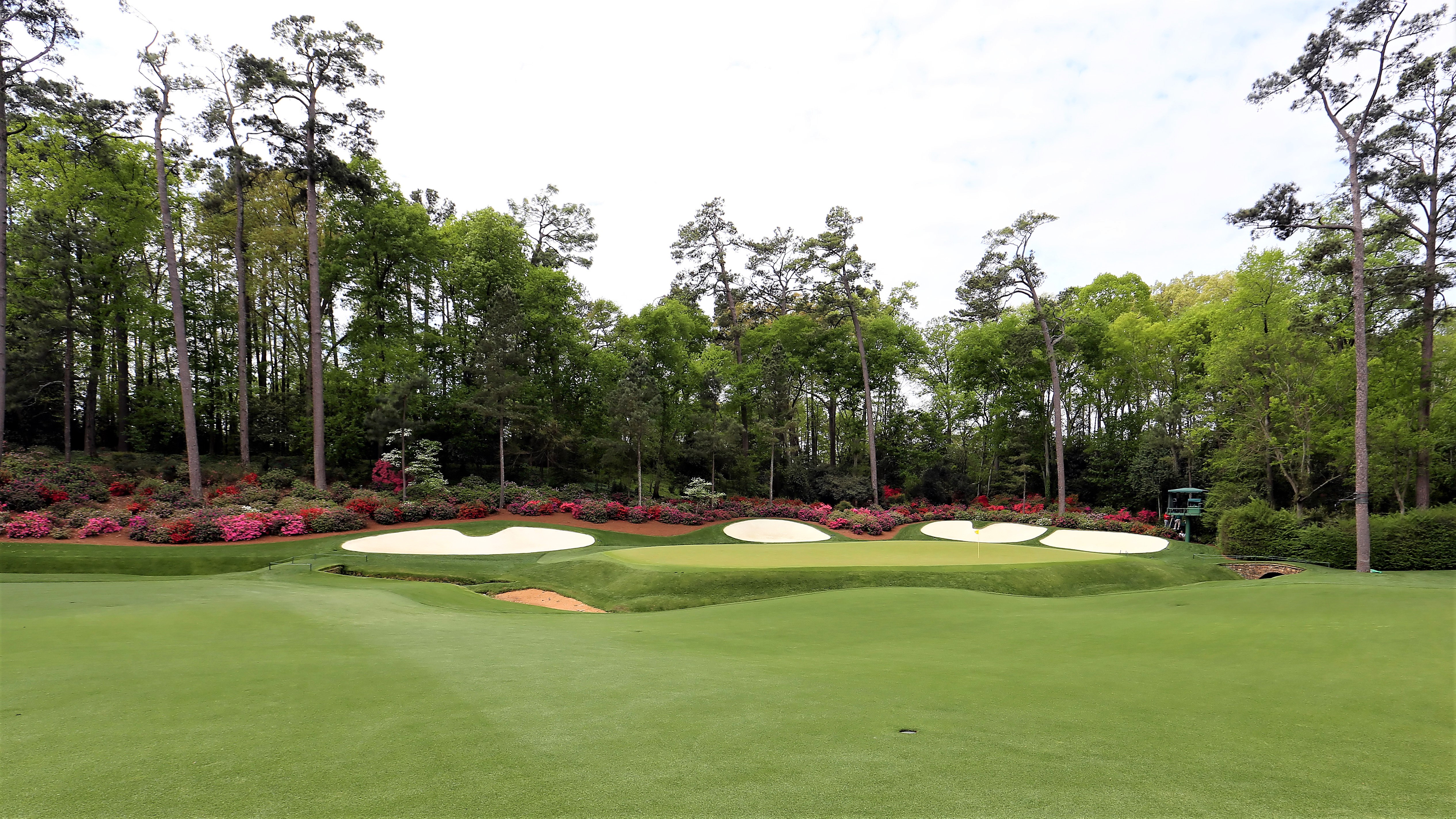
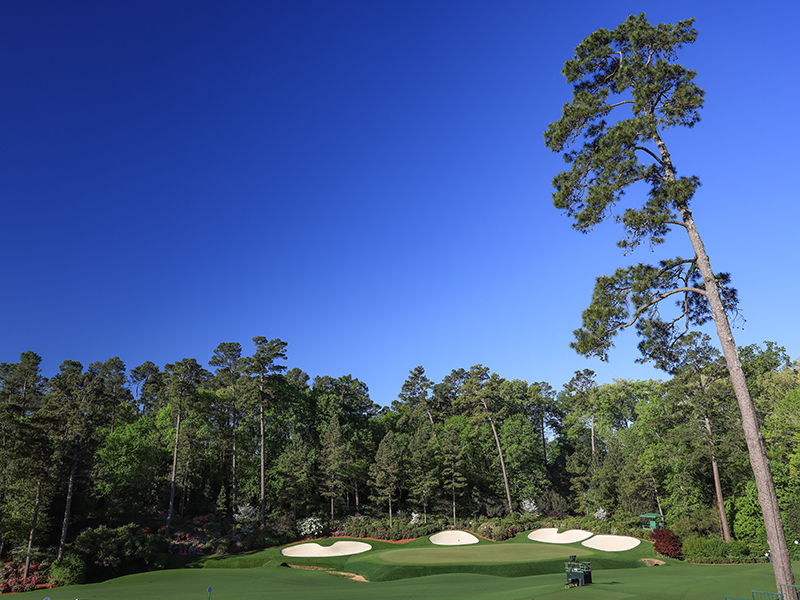
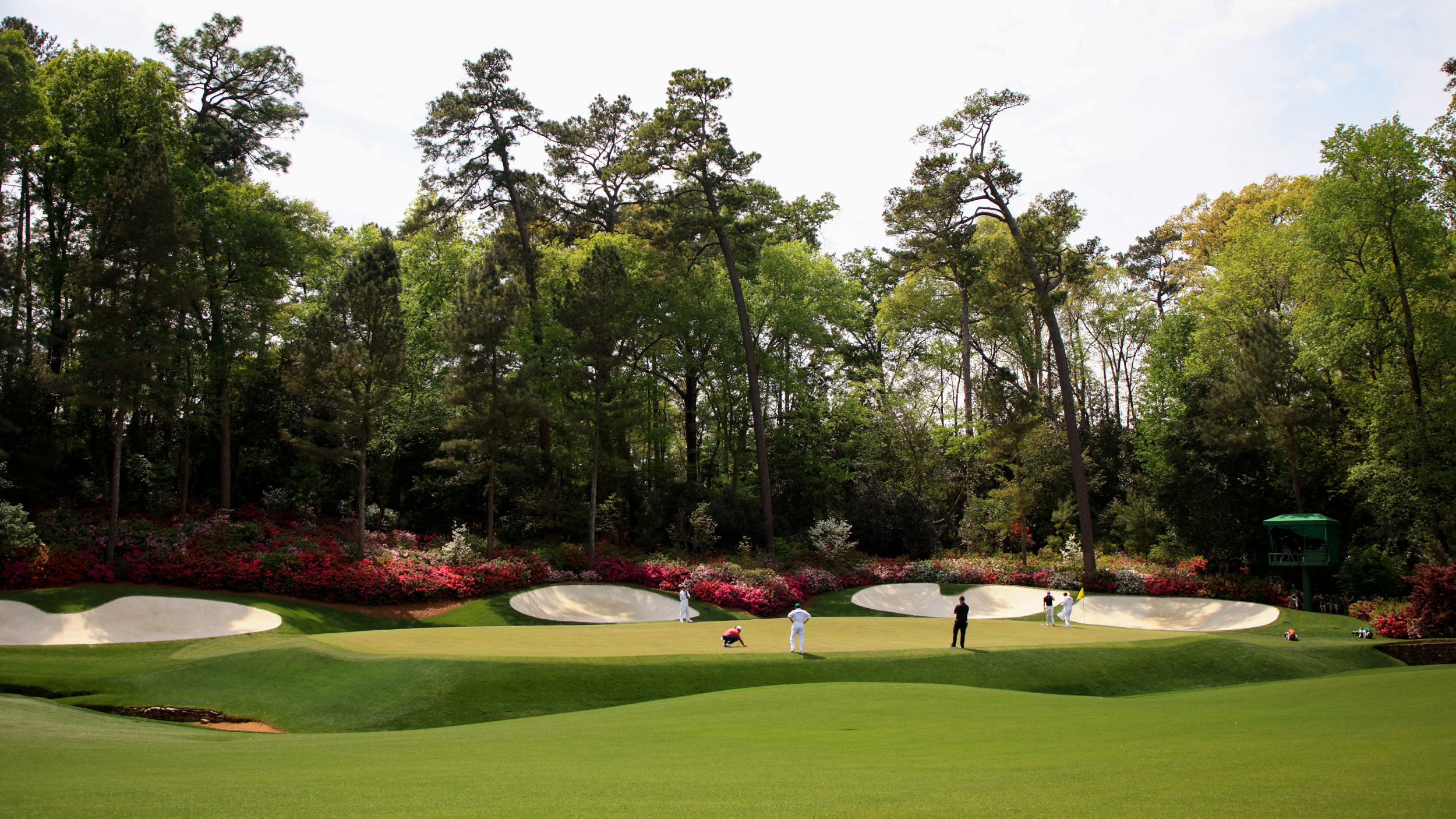
- Lowest score: 2 (Jeff Maggert, 1994)
- Highest score: 13 (Tommy Nakajima, 1978)
These flowers provide a lot of colour at Augusta National and from tee to green on this hole there are approximately 1,600 Azaleas on this hole. The 13th is the second-easiest hole on the course according to historic scoring, with an average of 4.774.
For the 2023 Masters, the 13th hole was finally lengthened following a number of big-hitting players driving it over the corner of the dogleg. The tee was pushed back 35 yards, with the hole now measuring 545 yards.
Hole 14 - Chinese Fir: Par 4, 440 yards
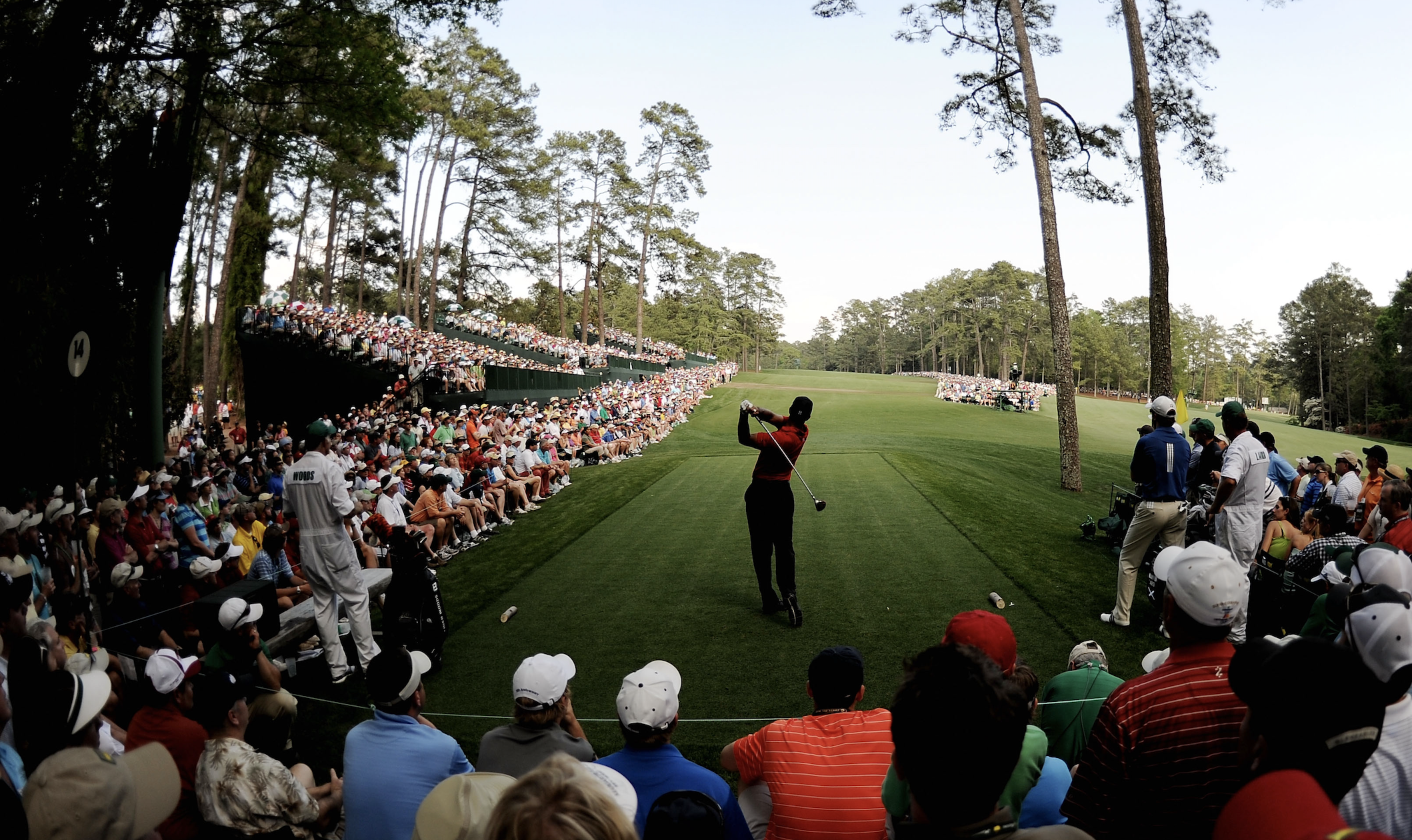
- Lowest score: 2 (21 times)
- Highest score: 8 (Nick Price, 1993)
Chinese Fir is the only hole at Augusta National currently without a bunker. It used to have a cross bunker but this was filled in after the 1952 Masters.
The 14th tee box was moved back 30-35 yards in 2002, with the hole now measuring 440 yards.
Through the years, there have been an incredible 21 hole-out eagles, with Shane Lowry getting the most recent 2 in 2024.
Hole 15 - Firethorn: Par 5, 550 yards
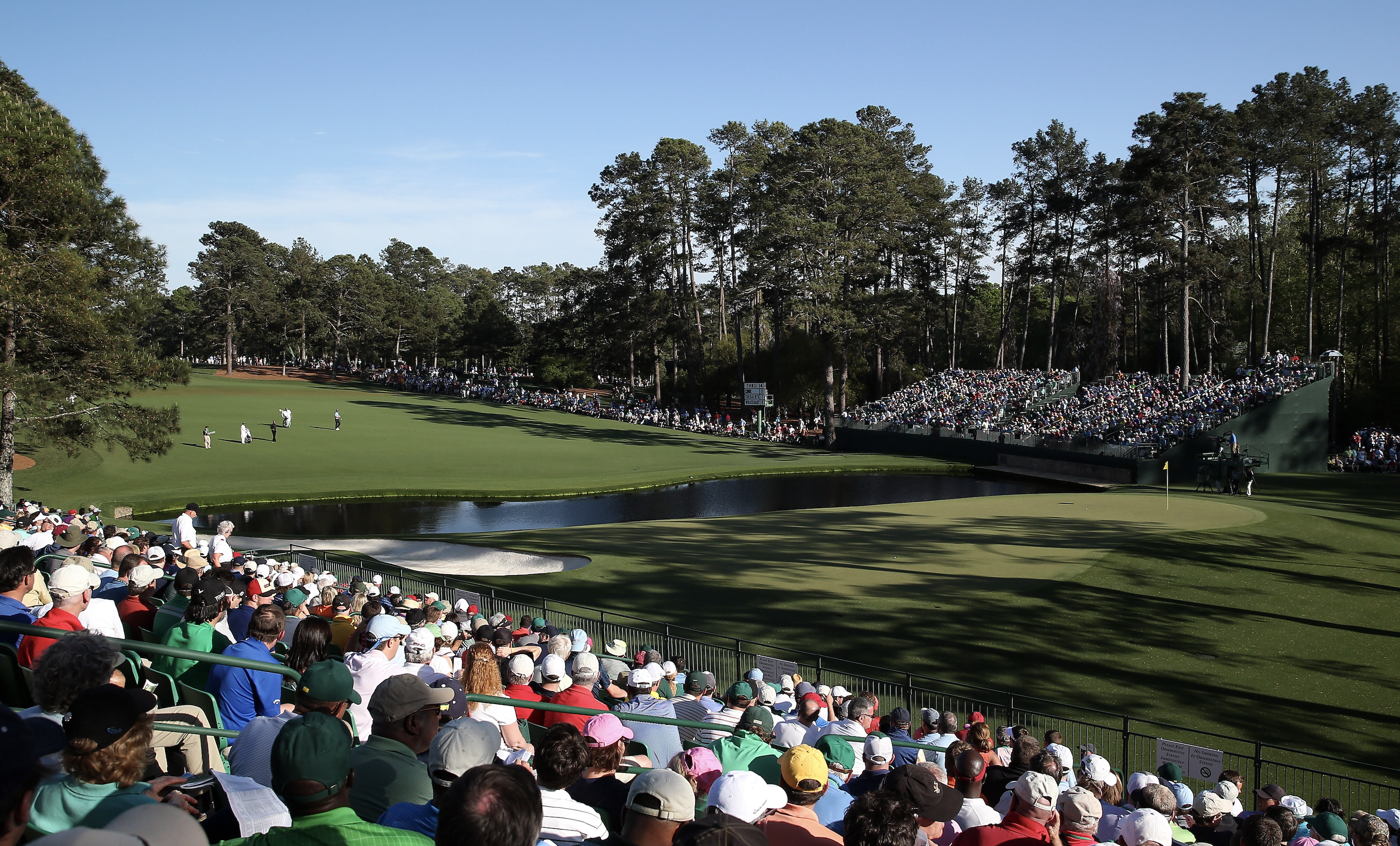
- Lowest score: 2 (Gene Sarazen, 1935)
- Highest score: 13 (Sergio Garcia, 2018)
Originally, this was one of three bunker-less holes on the course, together with 7 and 17. But a greenside bunker was introduced for the 1957 Masters.
The water in front of the green used to be a stream, but this has become a pond and the bank on its far side has been made slicker and steeper. Firethorn keeps getting longer, having had 25-30 yards added in 2006 and a further 20 yards added in 2022 - all by the way of moving the tee box back.
Sergio Garcia eagled it on his way to winning in 2017 before scoring a 13 the very next year...the highest score ever recorded on this hole. It is also scene of the famous 'Shot heard round the world' from Gene Sarazen back in 1935, where he holed out for an albatross.
Hole 16 - Redbud: Par 3, 170 yards
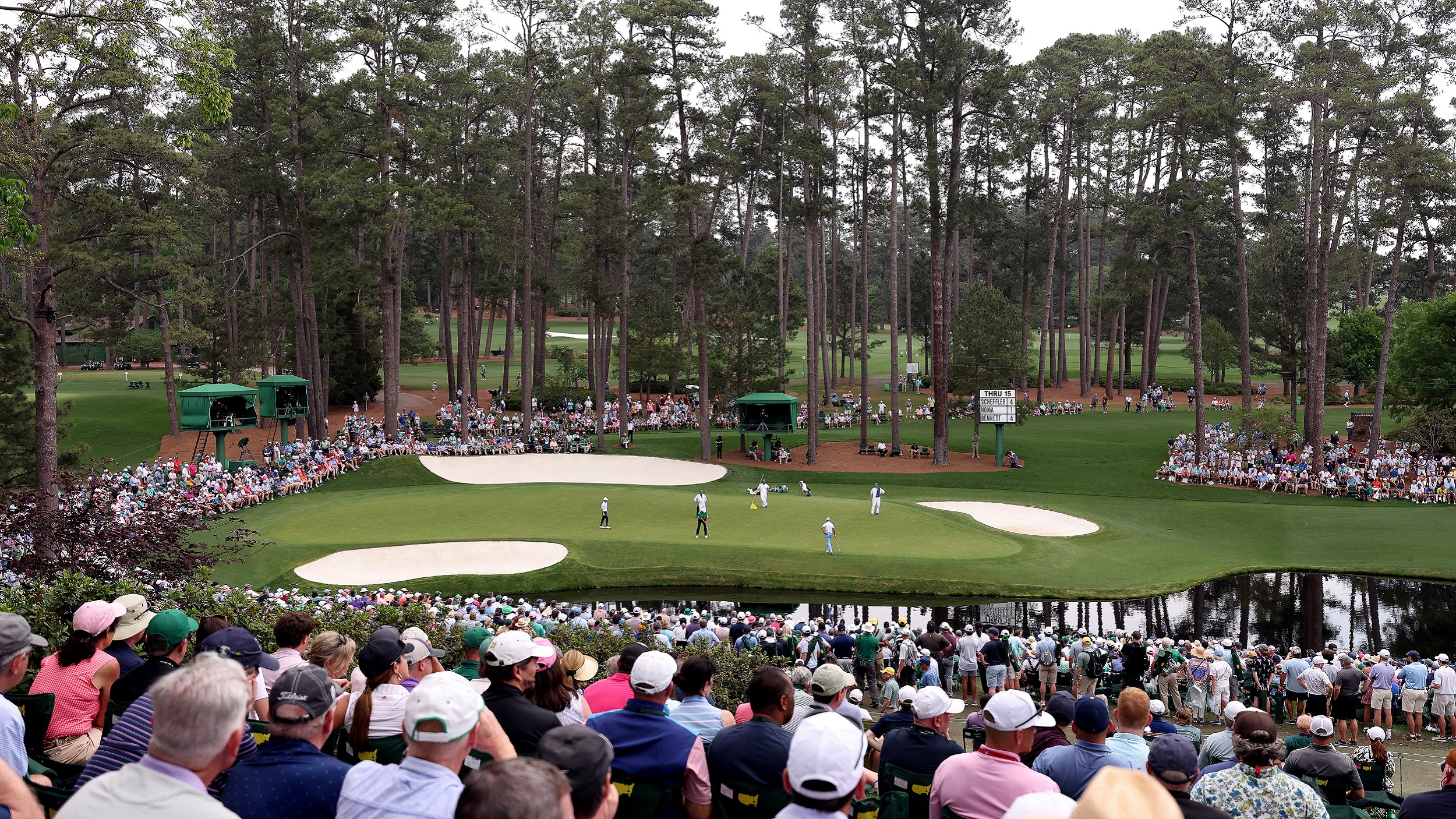
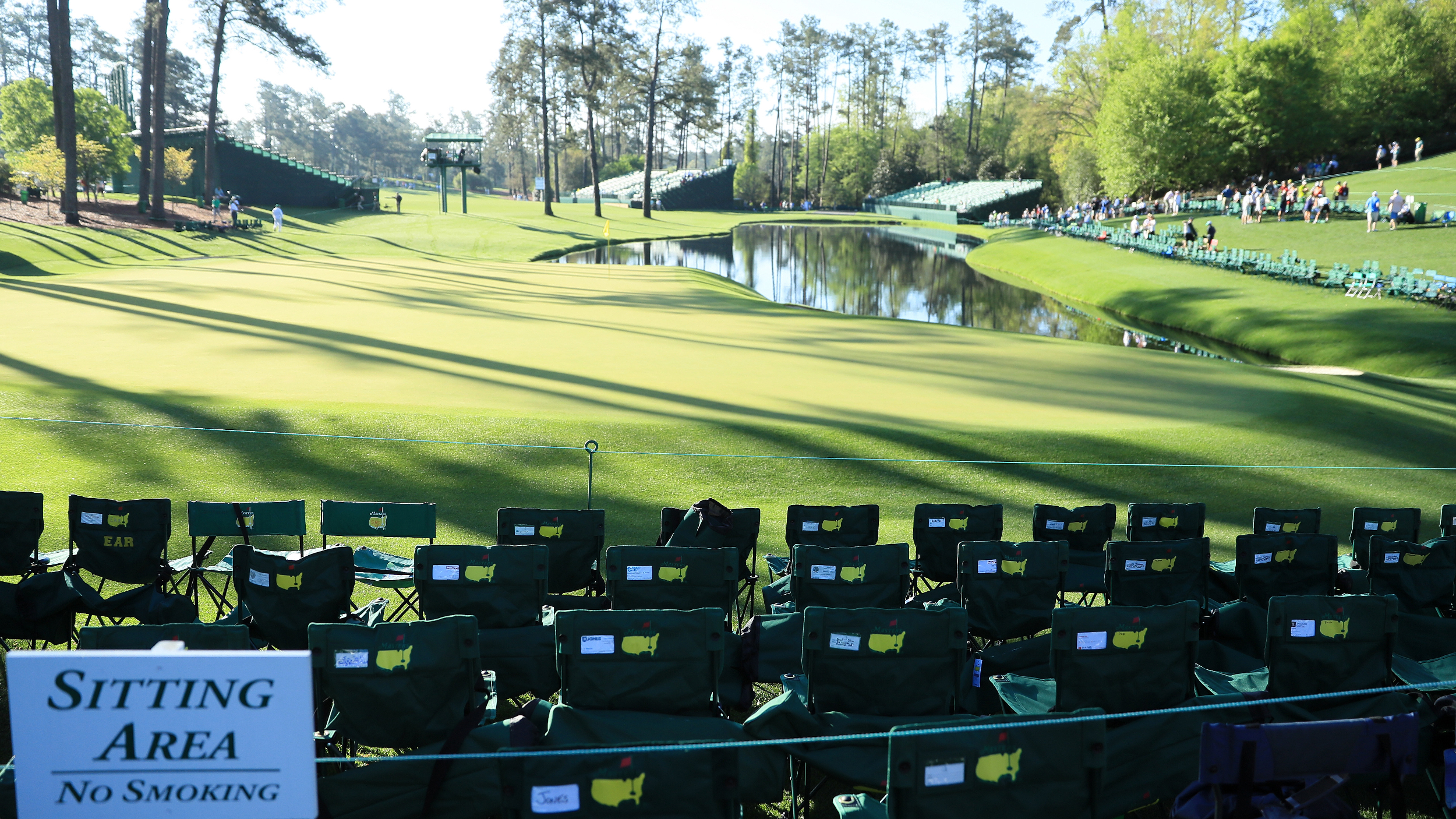
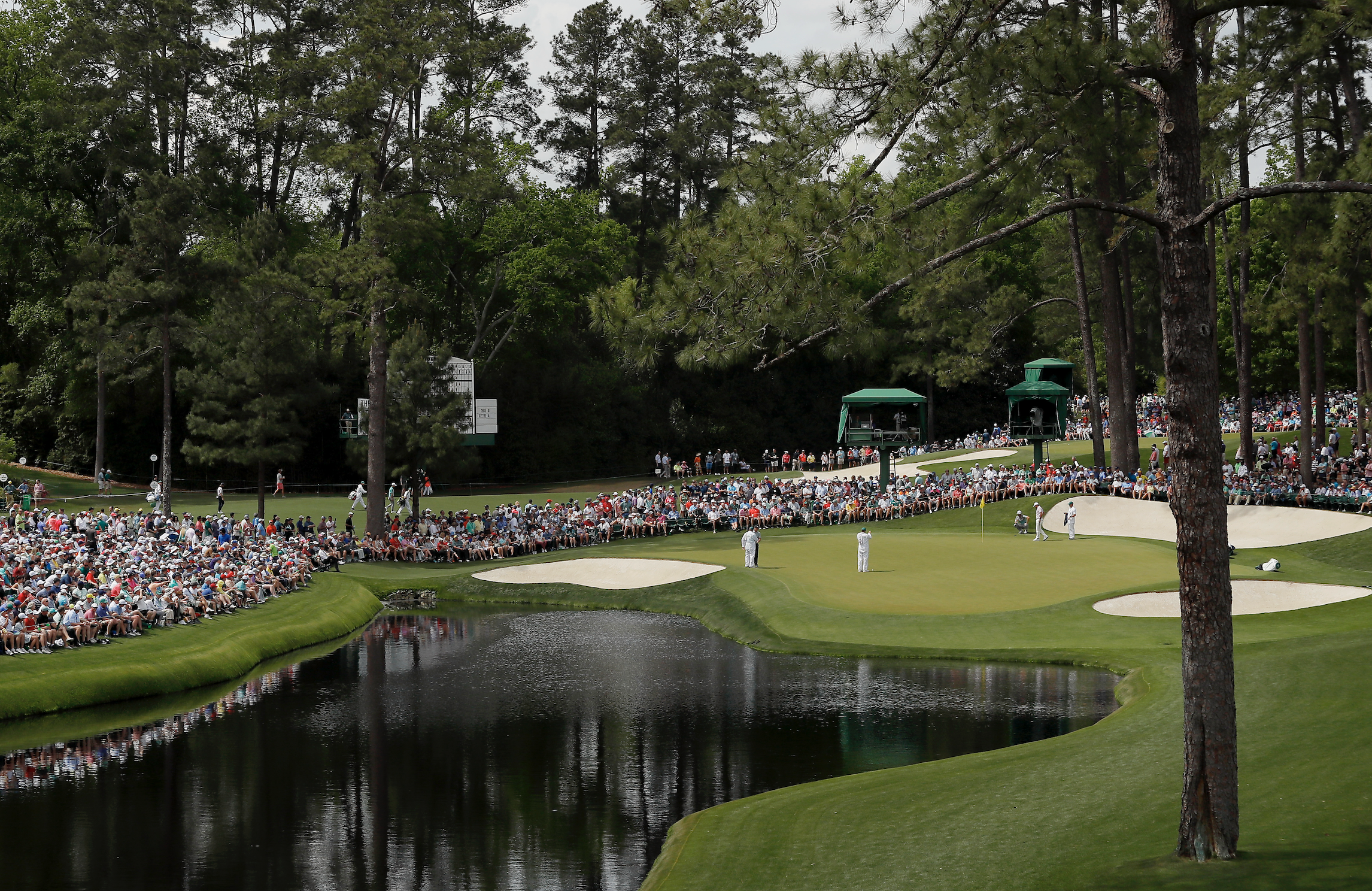
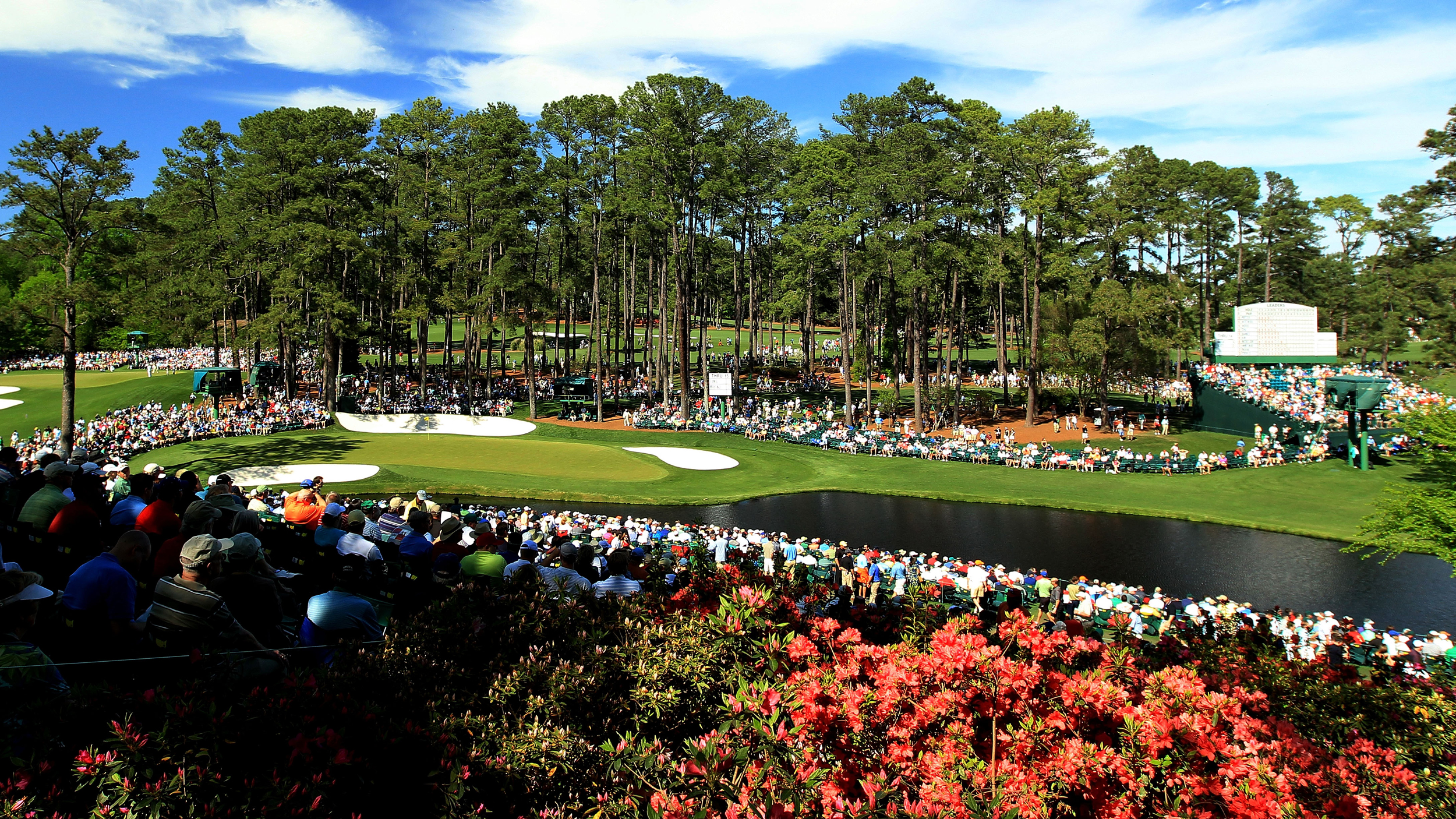
- Lowest score: 1 (24 times)
- Highest score: 11 (Herman Barron, 1950)
The original green on 16 had a brook running across the front and right side of the putting surface and was based on the 7th hole at Stoke Park. But Robert Trent Jones built a new 16th hole in 1948 by damming the creek to turn it into a pond and creating a new green on the other side of the former creek.
There have been no significant changes to this iconic, world-famous par 3 since 1973, although the green was rebuilt ahead of the 2025 Masters after damage from Hurricane Helene.
Hole 17 - Nandina: Par 4, 440 yards
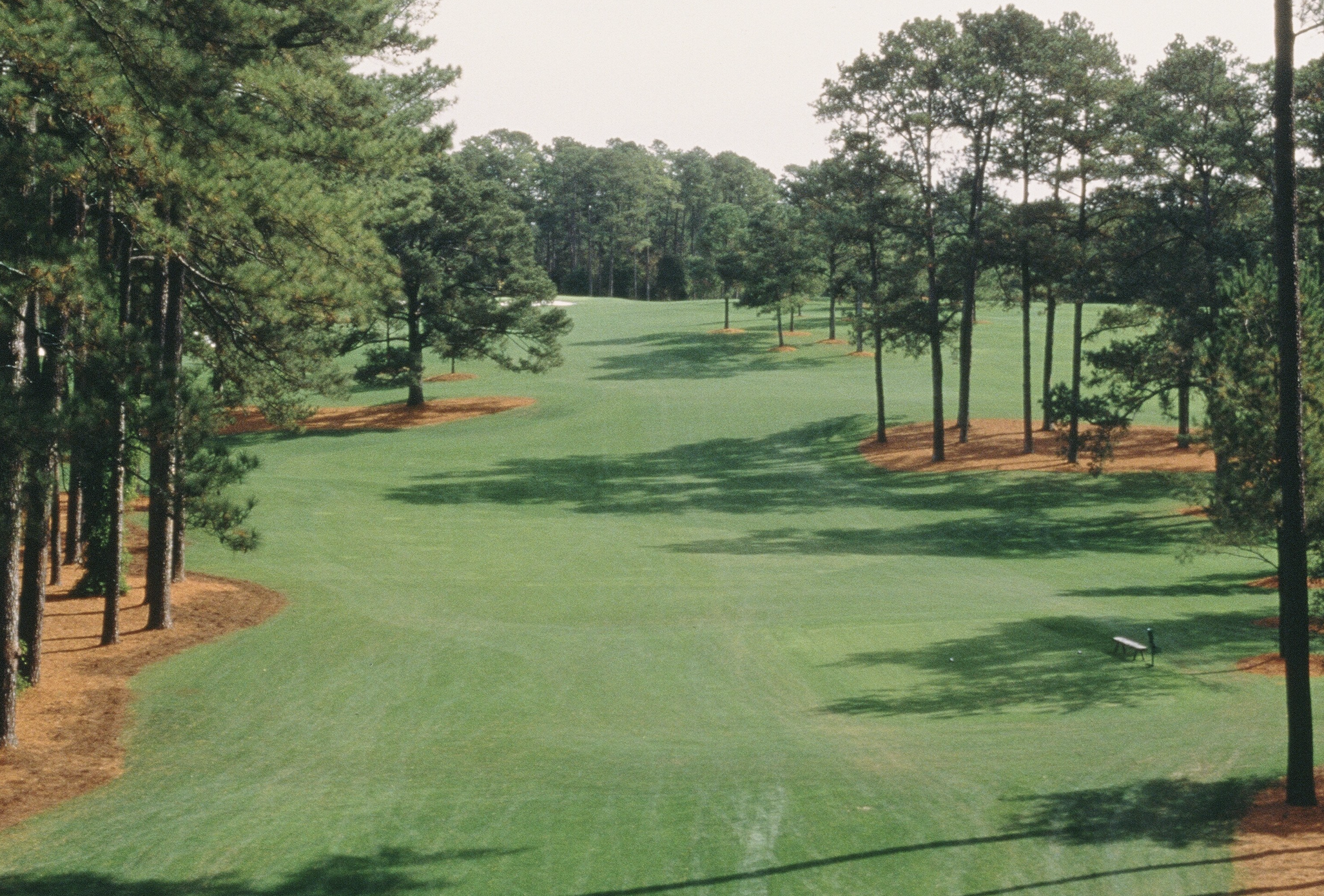
- Lowest score: 2 (4 times)
- Highest score: 7 (22 times)
Mackenzie designed an upturned saucer green and a bunkerless hole. But in 1937 his former assistant, Perry Maxwell redesigned the green and introduced bunkers to its front. Clifford Roberts was one who was not pleased with this reworking, writing to Maxwell that: “This is supposed to be a run-up hole. You have changed the character of the hole by inviting players to pitch it to the green."
The hole is now narrow and tree-lined, but was originally almost treeless. It had the most famous tree on the course on it, a pine tree that had grown so large that it irritated Augusta National member President Eisenhower who, it is said, often hit it with his drives. He proposed that the tree be cut down. It was not, and it became known as The Eisenhower Tree. In 2014 it was removed after storm damage.
Hole 18 - Holly: Par 4, 465 yards

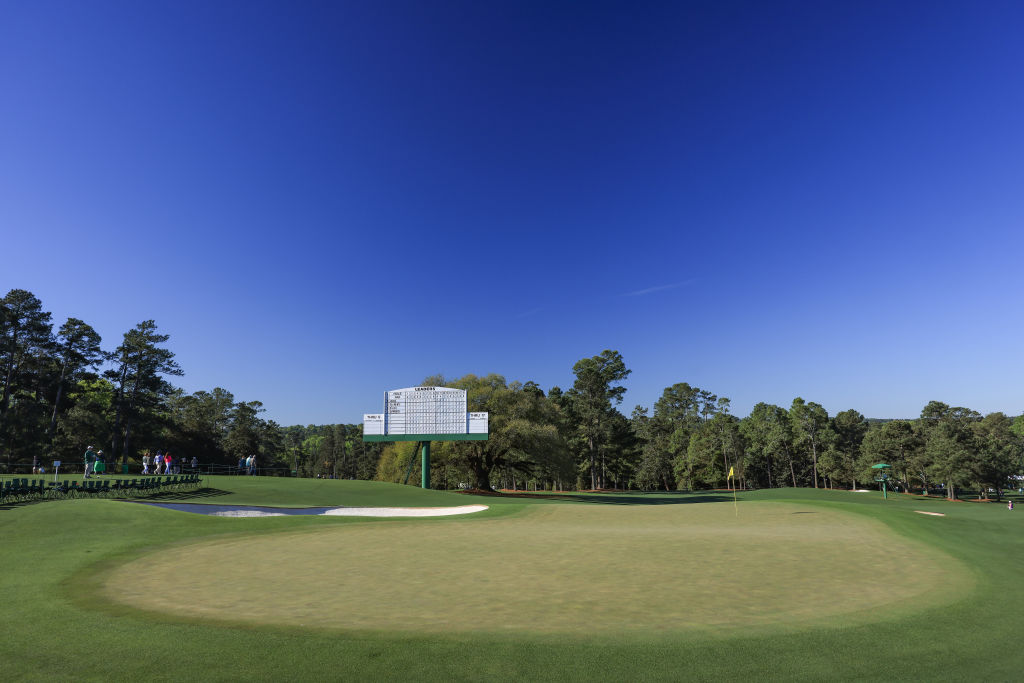
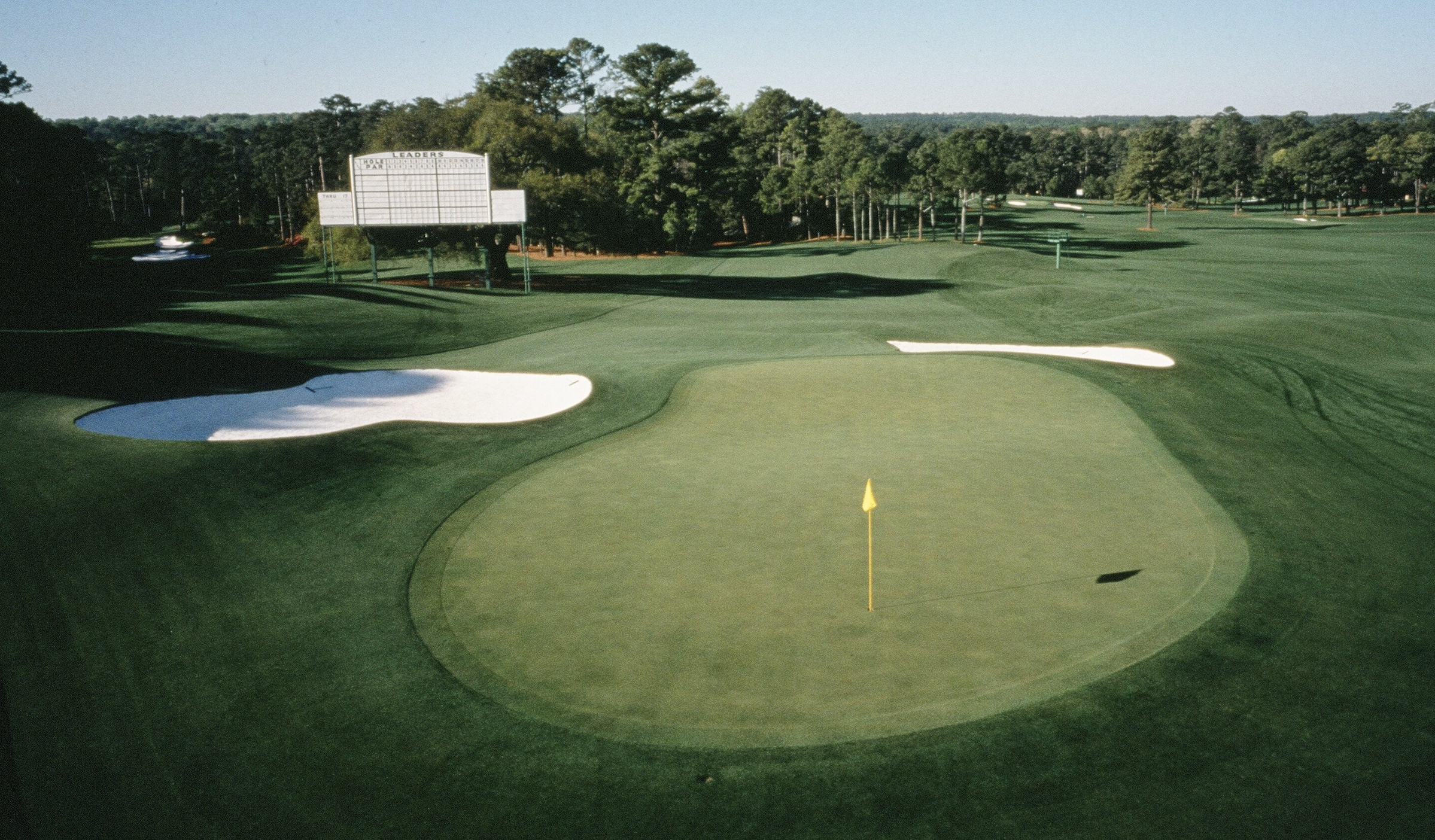
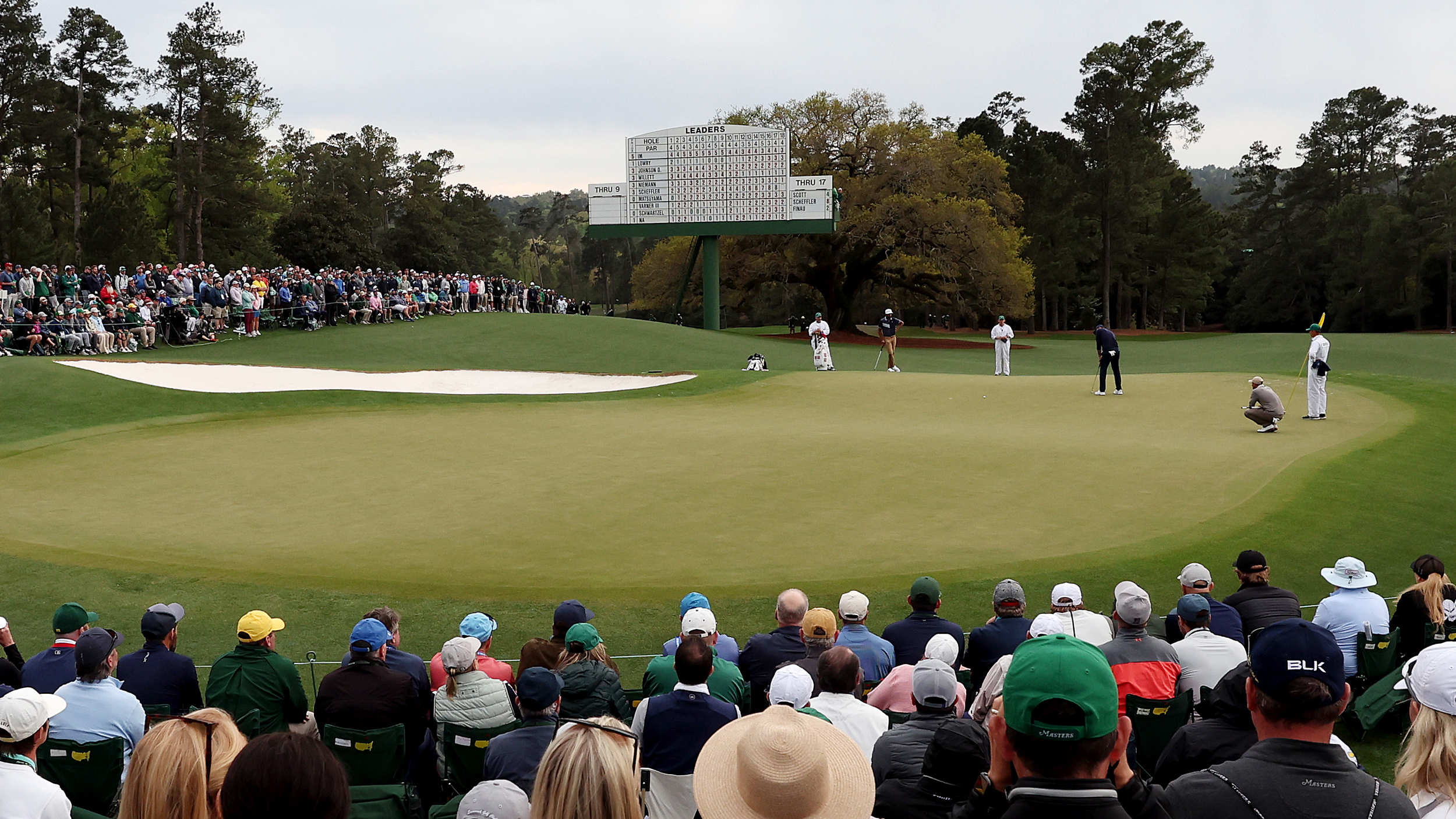
- Lowest score: 2 (6 times)
- Highest score: 8 (8 times)
This hole rises 70ft from tee to green. There had been a cross bunker until 1956, but it was aesthetic rather than strategic, as it was too far form the tee to catch drives, and too far from the green to threaten approaches.
The fairway bunkers on the left were introduced in 1967. This is yet another hole which has been significantly lengthened and a drive now has to be 300 yards to reach the first bunker and carry 335 yards to clear the second one.
What is the easiest hole at Augusta in The Masters?
The par 5 2nd, Pink Dogwood, is statistically the easiest hole at Augusta National during The Masters.
It has an average score of 4.773 during Masters history.
What is the hardest hole at Augusta in The Masters?
Statistically, the toughest hole at The Masters is Augusta National's 11th hole - White Dogwood.
The hole, which is the first of the Amen Corner trio of holes, has an average score of 4.304 through the years.







